algorithmic bias
description: systematic and repeatable errors in a computer system that create unfair outcomes, such as privileging one arbitrary group of users over others
86 results

The Equality Machine: Harnessing Digital Technology for a Brighter, More Inclusive Future
by
Orly Lobel
Published 17 Oct 2022
To paraphrase the study co-author Joanna Bryson, AI is no fairy godmother—it’s just an extension of our culture.8 So, in the absence of fairy godmothers, researchers are taking the lead in addressing these problems to build better machines. A growing number of computer scientists have committed to making machine learning fairer and more equal and are developing algorithms that would mitigate bias. One type of debiasing algorithm sorts out words that are inherently gendered (such as “daughter,” “mother,” “king,” or “brother”) from those that are not (say, “computer programmer,” “nurse,” “doctor,” or “homemaker”). The algorithm can thereby extract the bias from the data, reducing analogies that create stereotypical connections about traits, abilities, and activities. The programmer can thus constrain the algorithm’s learning process.
…
When the application of technology fails—as with racially biased facial recognition algorithms, for instance—these failures can be better exposed than past wrongs that were hidden from sight and not recorded. And failures can often be better corrected than our human fallibilities. We can scale success and learn from experimentation. Throughout the book, we will uncover so much to celebrate: tech communities—in research, business, and the public sector—developing algorithms that detect bias and discrimination in everyday workplace and social settings; software designed to help employers close pay gaps; bots that detect early signs of a propensity to harass and allow victims to report harassment anonymously; digital platforms transforming the images used in media, politics, and marketing to foster more diverse and empowering representations of women and people of color; a lively feminist debate on whether and how sex bots can mitigate trafficking and sex crimes and liberate desire and difference; digital health data collection and analysis that can reverse thousands of years of biased research; and so much more.
…
In a study published in Science, a machine trained to read through Google News articles learned to make associations between words. Without being guided in any way, the program came to associate male and female names with different types of careers and different kinds of emotions.7 Bias creeps into algorithms in this way because bias is baked into the language of our culture—because our societies are unequal. Once a machine is trained—namely, once it has read through thousands of news articles—it will exhibit stereotypes to a troubling degree. It will complete the sentences it’s fed in a discriminatory way, stereotypically predicting professions, behaviors, and treatment.

More Everything Forever: AI Overlords, Space Empires, and Silicon Valley's Crusade to Control the Fate of Humanity
by
Adam Becker
Published 14 Jun 2025
Algorithms are used to mete out credit scores and weigh the risk of a loan; like criminal risk assessment, these algorithms discriminate against Black people and other minorities.120 Getting a good credit score can determine your ability to buy a car or house, get hired for a new job—or afford chemotherapy. Algorithmic bias is literally a matter of life and death, especially if you’re not a white man. Yet despite the severity of these problems, when rationalists and others concerned about AI alignment are asked about algorithmic bias, they dismiss it as relatively unimportant. According to Hinton, algorithmic bias is a mere distraction compared to the caliber of disaster that awaits from the real trouble in Silicon Valley. Gebru’s “concerns aren’t as existentially serious as the idea of these things getting more intelligent than us and taking over,” he says.121 And Yudkowsky doesn’t think algorithmic bias is terribly concerning, referring to it as a “short-term and small” problem.122 “If they would leave the people trying to prevent the utter extinction of all humanity alone I should have no more objection to them than to the people making sure the bridges stay up.
…
When Mitchell tried to document instances of discrimination, the company cut off her access to her work.116 Then, in January 2021, not long before firing Mitchell as well, Google announced that it had created a new transformer-based language model with ten times as many parameters as GPT-3, trained on a corpus nearly twice as big.117 Google’s actions revealed the company’s priorities. Work on LLMs and other ML systems has proceeded at a breakneck pace at Google, Microsoft, OpenAI, and elsewhere, even as more examples of algorithmic bias crop up and don’t get fixed, and even as it becomes increasingly clear that some of these problems are just inherent to such LLMs, baked into the data used to train them. It will always be possible to get ChatGPT to produce hate speech at volume. Other ML systems will have algorithmic bias, too, as long as there’s biased input. The problem is that these systems are being used as if they are unbiased, and that just reinforces existing power structures and exacerbates inequality.
…
“From my point of view [algorithmic biases] are very real problems that will affect and are affecting millions of people, if not more, as opposed to a speculative one that’s really a philosophical conundrum,” he says.125 The fact that algorithmic bias exists right now, unlike the paperclip AGI, leads to another rhetorical move: a play for legitimacy sometimes used by those concerned about AI alignment. Existing problems arising out of algorithmic bias are given as an example of AI misbehavior alongside hypotheticals about a future superintelligent system, indicating that the two kinds of issues are related or hold similar weight. “The fact that actual ML safety & bias issues are sometimes used as an example to give legitimacy to ‘AI alignment’ BS—even though the ‘alignment field’ is actively undermining progress there—is complete intellectual sleight of hand,” writes François Chollet, an AI researcher and engineer at Google.

The Road to Conscious Machines
by
Michael Wooldridge
Published 2 Nov 2018
But the good news is that at least there are signs that governments are willing to try. Algorithmic Bias We might hope that AI systems would be free of the prejudices and biases that plague the human world, but I’m afraid that is not the case. Over the past decade, as machine learning systems have been rolled out into more and more areas of application, we have begun to understand how automated decision-making systems can exhibit algorithmic bias. It is now a major research field, with many groups struggling to understand the problems it raises, and how to avoid it. Algorithmic bias, as the name suggests, is concerned with situations in which a computer program – not just AI systems, but any computer program – exhibits bias of some form in its decision-making.
…
This takes us into a consideration of how AI will affect the nature of work, and the possibility that AI-governed employment will be alienating. This, in turn, leads us to consider the impact that the use of AI technologies might have on human rights, and the possibility of lethal autonomous weapons. We’ll then consider the emergence of algorithmic bias, and the issues surrounding lack of diversity in AI, as well as the phenomena of fake news and fake AI. Employment and Unemployment ‘Robots will take our jobs. We’d better plan now, before it’s too late.’ –– Guardian, 2018 After the Terminator narrative, probably the most widely discussed and widely feared aspect of AI is how it will affect the future of work and, in particular, the potential it has to put people out of work.
…
For example, imagine that, in the banking example above, the key feature of the data that you chose to train your program on was … racial origin. Then it would be no surprise if the resulting program made hopelessly biased decisions about who should get a mortgage. (You don’t think a bank would be stupid enough to do something like this, do you? Just you wait.) Algorithmic bias is a particularly prominent issue at present because, as we saw, one feature of the current wave of AI systems is that they are ‘black boxes’: they cannot explain or rationalize the decisions they make in the way that a person can. This problem is exacerbated if we place too much trust in the systems we build – and there is anecdotal evidence that we do exactly that with AI systems.
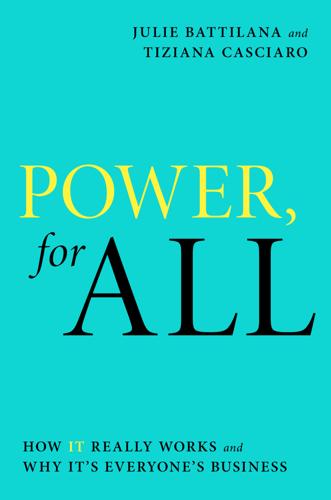
Power, for All: How It Really Works and Why It's Everyone's Business
by
Julie Battilana
and
Tiziana Casciaro
Published 30 Aug 2021
House Committee on Science, Space, and Technology, she outlined key priorities related to AI, including the need to halt both governmental and commercial use of facial recognition in sensitive social and political contexts until the risks are fully studied and adequate regulations, such as biometric privacy laws and assessments to vet algorithms for bias, are in place.72 The latter will be particularly challenging, not only in terms of deciding where responsibility for assessing algorithms for bias should rest, but also because what constitutes a fair algorithm is a complex question, one that engineers, computer scientists, and legal scholars on the front lines of ethical AI development are asking with increasing urgency.73 But we do know some things about how algorithms function and where we are better equipped to exercise oversight.
…
The Workers Disagree,” Vox, November 21, 2018, https://www.vox.com/2018/11/21/18105719/google-walkout-real-change-organizers-protest-discrimination-kara-swisher-recode-decode-podcast. 72 Artificial Intelligence, Societal and Ethical Implications, Before the United States House of Representatives Committee on Science, Space, and Technology, 116th Cong. (2019) (statement of Meredith Whittaker, cofounder and codirector of AI Now Institute). 73 For example, Genie Barton, Nicol Turner-Lee, and Paul Resnick, “Algorithmic Bias Detection and Mitigation: Best Practices and Policies to Reduce Consumer Harms,” Brookings, May 22, 2019, https://www.brookings.edu/research/algorithmic-bias-detection-and-mitigation-best-practices-and-policies-to-reduce-consumer-harms/; Sorelle A. Friedler et al., “A Comparative Study of Fairness Enhancing Interventions in Machine Learning,” in Proceedings of the Conference on Fairness, Accountability, and Transparency (2019): 329–38; Solon Barocas, Moritz Hardt, and Arvind Narayanan, Fairness and Machine Learning (fairmlbook.org, 2019). 74 Cynthia Dwork, “Skewed or Rescued?
…
In 2021, Australia passed a law requiring social media companies to pay for the journalism appearing on their platforms, despite their protestations—a landmark step toward restoring a measure of power for public-interest journalism.69 Judicial systems are also beginning to hold tech companies to account for algorithmic bias. In a watershed 2021 lawsuit brought by delivery riders against food app Deliveroo, a court in Bologna, Italy, ruled that even if an algorithm discriminates against workers unintentionally, a company can still be held liable and be forced to pay damages.70 It isn’t easy to regulate complex technologies that tend to evolve rapidly, however.
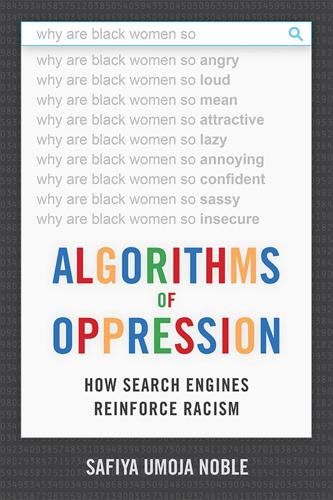
Algorithms of Oppression: How Search Engines Reinforce Racism
by
Safiya Umoja Noble
Published 8 Jan 2018
Helen Nissenbaum, a professor of media, culture, and communication and computer science at New York University, has written with Lucas Introna, a professor of organization, technology, and ethics at the Lancaster University Management School, about how search engines bias information toward the most powerful online. Their work was corroborated by Alejandro Diaz, who wrote his dissertation at Stanford on sociopolitical bias in Google’s products. Kate Crawford and Tarleton Gillespie, two researchers at Microsoft Research New England, have written extensively about algorithmic bias, and Crawford recently coorganized a summit with the White House and New York University for academics, industry, and activists concerned with the social impact of artificial intelligence in society. At that meeting, I participated in a working group on artificial-intelligence social inequality, where tremendous concern was raised about deep-machine-learning projects and software applications, including concern about furthering social injustice and structural racism.
…
The library practitioner Matthew Reidsma gave a recent gift to the profession when he blogged about library discovery systems, or search interfaces, that are just as troubled as commercial interfaces. In his blog post, he details the limitations of databases, the kinds of gender biases that are present in discovery tools, and how little innovation has been brought to bear in resolving some of the contradictions we know about.35 Figure 5.2. A call to the profession to address algorithmic bias in library discovery systems by Matthew Reidsma attempts to influence the field of information studies. Source: Reidsma, 2016. I sought to test the call that Reidsma made to the profession to interrogate library information management tools by conducting searches in a key library database.
…
Rainie, L., and Madden, M. (2015, March). Americans’ Privacy Strategies Post-Snowden. Pew Research Center. Retrieved from www.pewinternet.org. Rajagopal, I., and Bojin, N. (2002). Digital Representation: Racism on the World Wide Web. First Monday, 7(10). Retrieved from www.firstmonday.org. Reidsma, M. (2016, March 11). Algorithmic Bias in Library Discovery Systems. Matthew Reidsma’s blog. Retrieved from http://matthew.reidsrow.com/articles/173. Rifkin, J. (1995). The End of Work: The Decline of the Global Labor Force and the Dawn of the Post-Market Era. New York: Putnam. Rifkin, J. (2000). The Age of Access: The New Culture of Hypercapitalism, Where All of Life Is a Paid-For Experience.
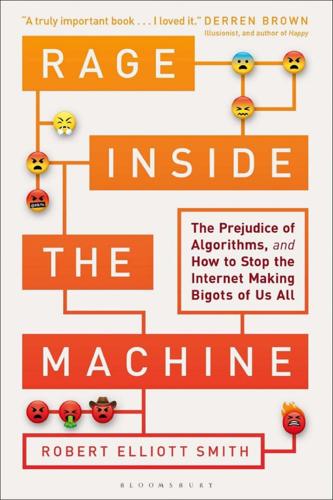
Rage Inside the Machine: The Prejudice of Algorithms, and How to Stop the Internet Making Bigots of Us All
by
Robert Elliott Smith
Published 26 Jun 2019
Understood: Women’s Hearts Are Victims of a System that Is Ill-Equipped to Diagnose, Treat and Support Them: Heart & Stroke 2018 Heart Report. www.heartandstroke.ca/-/media/pdf-files/canada/2018-heart-month/hs_2018-heart-report_en.ashx?la=en&hash=B7E7C6225111EB4AECEE7EE729BFC050E2643082 Chapter 8 1Frederick S. Lane, 2009, American Privacy: The 400-Year History of Our Most Contested Right. Boston: Beacon Press. 2Aaron Pressman, 2018, How to Fight the Growing Scourge of Algorithmic Bias in AI. Fortune, http://fortune.com/2018/09/14/fight-algorithmic-bias-joy-buolamwini/ 3Mark Frauenfelder, 2017, Racist Soap Dispenser. BoingBoing, https://boingboing.net/2017/08/16/racist-soap-dispenser.html 4Jana Kasperkevic, 2105, Google Says Sorry for Racist Auto-Tag in Photo App. Guardian, www.theguardian.com/technology/2015/jul/01/google-sorry-racist-auto-tag-photo-app 5Tom Simonite, 2018, When It Comes to Gorillas, Google Photos Remains Blind.
…
People pick the features; it’s extremely difficult for those people to avoid biases in their selection, and all feature-based models of complex phenomena contain biases. Therefore, the amplification Eubanks suggests is not just about biases in data, it’s about the whole presumption of algorithmic understanding of complex human issues. Algorithmic bias is certainly a huge and hidden civil rights issue, because it will not be the wealthy who will have their job or loan applications assessed by a computer (or their child care, mortgage or medical insurance). It is not the white-collar criminal who will be evaluated en masse by an algorithm for parole, or white-collar suburbs that will be targeted as areas that must be patrolled by police cars and surveillance in a search for potential financial crimes.
…
While Wikipedia defines ‘fake news’ as a synonym for news satire, more recently it has become at worst a condemnation of real human journalism, and at best an umbrella term for the uncontrolled explosion of misleading information dispersed on social media. Mark Zuckerberg has pledged to make Facebook impede fake news. But it’s unclear how, as in the past his company has eliminated human editors and curators in favour of algorithms, ironically to ensure less bias in their presentation of news. As we’ve seen before, being able to determine what is true and what is fake is not a goal that algorithms can achieve easily. Furthermore, the war on fake news misses the point. Regardless of whether algorithms present ‘true’ or ‘fake’ news, they will still be working towards their primary directive: the maximization of value.

Human Compatible: Artificial Intelligence and the Problem of Control
by
Stuart Russell
Published 7 Oct 2019
Although this sounds admirable in principle, it remains to be seen—at least at the time of writing—how much impact this will have in practice. It is often so much easier, faster, and cheaper to leave the decisions to the machine. One reason for all the concern about automated decisions is the potential for algorithmic bias—the tendency of machine learning algorithms to produce inappropriately biased decisions about loans, housing, jobs, insurance, parole, sentencing, college admission, and so on. The explicit use of criteria such as race in these decisions has been illegal for decades in many countries and is prohibited by Article 9 of the GDPR for a very wide range of applications.
…
The EU’s GDPR is often said to provide a general “right to an explanation” for any automated decision,38 but the actual language of Article 14 merely requires meaningful information about the logic involved, as well as the significance and the envisaged consequences of such processing for the data subject. At present, it is unknown how courts will enforce this clause. It’s possible that the hapless consumer will just be handed a description of the particular deep learning algorithm used to train the classifier that made the decision. Nowadays, the likely causes of algorithmic bias lie in the data rather than in the deliberate malfeasance of corporations. In 2015, Glamour magazine reported a disappointing finding: “The first female Google image search result for ‘CEO’ appears TWELVE rows down—and it’s Barbie.” (There were some actual women in the 2018 results, but most of them were models portraying CEOs in generic stock photos, rather than actual female CEOs; the 2019 results are somewhat better.)
…
Fortunately, a good deal of attention has been paid to the problem of removing inadvertent bias from machine learning algorithms, and there are now methods that produce unbiased results according to several plausible and desirable definitions of fairness.39 The mathematical analysis of these definitions of fairness shows that they cannot be achieved simultaneously and that, when enforced, they result in lower prediction accuracy and, in the case of lending decisions, lower profit for the lender. This is perhaps disappointing, but at least it makes clear the trade-offs involved in avoiding algorithmic bias. One hopes that awareness of these methods and of the issue itself will spread quickly among policy makers, practitioners, and users. If handing authority over individual humans to machines is sometimes problematic, what about authority over lots of humans? That is, should we put machines in political and management roles?

Applied Artificial Intelligence: A Handbook for Business Leaders
by
Mariya Yao
,
Adelyn Zhou
and
Marlene Jia
Published 1 Jun 2018
Finally, the use of technology—including AI, predictive analytics, automation, and social media bots—can have far-ranging social impact. AI can be used for illegal surveillance, propaganda, deception, and social manipulation. * * * (29) Yao, M. (2017, November 2). Fighting Algorithmic BIAS & Homogenous Thinking in AI. TopBots. Retrieved from http://www.topbots.com/fightinghomogenous-thinking-algorithmic-bias-ai/ (30) Westervelt, E (Contributor). (2017, August 18). Did A Bail Reform Algorithm Contribute To This San Francisco Man’s Murder? [Radio Broadcast Episode]. In Carline Watson (Executive Producer), All Things Considered.

The Lonely Century: How Isolation Imperils Our Future
by
Noreena Hertz
Published 13 May 2020
CHAPTER EIGHT: The Digital Whip 1 Robert Booth, ‘Unilever saves on recruiters by using AI to assess job interviews’, Guardian, 25 October 2019, https://www.theguardian.com/technology/2019/oct/25/unilever-saves-on-recruiters-by-using-ai-to-assess-job-interviews; The Harvey Nash HR Survey 2019, https://www.harveynash.com/hrsurvey/full-report/charts/#summary. 2 ‘HireVue surpasses ten million video interviews completed worldwide’, HireVue, 21 May 2019, https://www.hirevue.com/press-release/hirevue-surpasses-ten-million-video-interviews-completed-worldwide. 3 ‘EPIC Files Complaint with FTC about Employment Screening Firm HireVue’, Electronic Privacy Information Center, 6 November 2019, https://epic.org/2019/11/epic-files-complaint-with-ftc.html; see full complaint at https://epic.org/privacy/ftc/hirevue/EPIC_FTC_HireVue_Complaint.pdf. 4 Loren Larsen, ‘HireVue Assessments and Preventing Algorithmic Bias’, HireVue, 22 June 2018, https://www.hirevue.com/blog/hirevue-assessments-and-preventing-algorithmic-bias; cf. Emma Leech, ‘The perils of AI recruitment’, New Statesman, 14 August 2019, https://tech.newstatesman.com/emerging-technologies/ai-recruitment-algorithms-bias; Julius Schulte, ‘AI-assisted recruitment is biased. Here’s how to make it more fair’, World Economic Forum, 9 May 2019, https://www.weforum.org/agenda/2019/05/ai-assisted-recruitment-is-biased-heres-how-to-beat-it/. 5 Drew Harwell, ‘A face-scanning algorithm increasingly decides whether you deserve the job’, Washington Post, 6 November 2019, https://www.washingtonpost.com/technology/2019/10/22/ai-hiring-face-scanning-algorithm-increasingly-decides-whether-you-deserve-job/. 6 Reuters, ‘Amazon ditched AI recruiting tool that favoured men for technical jobs’, Guardian, 11 October 2018, https://www.theguardian.com/technology/2018/oct/10/amazon-hiring-ai-gender-bias-recruiting-engine. 7 Kuba Krys et al., ‘Be Careful Where You Smile: Culture Shapes Judgments of Intelligence and Honesty of Smiling Individuals’, Journal of Nonverbal Behavior 40 (2016), 101–16, https://doi.org/10.1007/s10919-015-0226-4. these assumptions, reflected in proverbs and stereotypes, are now backed up by quantitative analysis of 44 countries. 8 The broad theory holds that in countries with more historical diversity – i.e. populated by a large proportion of immigrants who may not share languages or cultural norms – smiles are more expected and used as social currency; see Khazan, ‘Why Americans smile so much’, The Atlantic, 3 May 2017, https://www.theatlantic.com/science/archive/2017/05/why-americans-smile-so-much/524967/. 9 The retail giant’s eventual closure of its German stores was related, analysts speculate, to its inability to adapt to different cultural expectations; Mark Landler and Michael Barbaro, ‘Wal-Mart Finds That Its Formula Doesn’t Fit Every Culture’, New York Times, 2 August 2006, https://www.nytimes.com/2006/08/02/business/worldbusiness/02walmart.html; see also Khazan, ‘Why Americans smile so much’. 10 Implied in this statement on its website under FAQ for interviewees: ‘Customer-facing jobs, like a bank teller role, do require a degree of friendliness and attention to other people.
…
Platforms like Uber, Fiverr and TaskRabbit that use ratings should be mandated to audit their mechanisms, identify potential biases and recalibrate accordingly. Moreover, an ‘appeals process’ must be guaranteed, so that those who rely on these platforms to make a decent living are able to contest ratings that they consider unfair. Whilst algorithmic bias is considerably harder to address, we can certainly screen for it much better than has been done to date. Ironically, there is perhaps even a role for algorithms here in monitoring and identifying such biases.61 More fundamentally, the choices that underpin the algorithm – how the data is collected, its code and the decision-making heuristics that parse the data – need to be made transparent, so that redress and recourse are possible.

Artificial Whiteness
by
Yarden Katz
Some protesters are holding masks imprinted with Amazon founder Jeff Bezos’s face. Photograph by NWDC Resistance. Yet these are familiar uses of computing that do not fall under the fundable rubric of “AI” that the AI expert industry is after. And activists haven’t framed these issues around “AI,” nor around phrases such as “algorithmic accountability” or “algorithmic bias” invoked by critical AI experts. Instead, activists have focused on how technical systems fit into the political system that fuels deportations and detentions, as outlined in Mijente’s report Who’s Behind ICE?. The report highlights the role of “cloud computing” in enabling data interoperability across agencies.
…
abolition, 143, 148, 247nn37–38 Action Technologies, 290n29 Adam, Alison, 6, 30, 99–100, 103, 187, 207 adaptation, of AI, 10, 65, 128, 167, 178–80 Afghanistan, 58, 209, 219 Agre, Philip, 50, 198–99, 248n84, 249n85, 291n32, 291nn33–34, 299n79 AI Magazine, 23, 56–57, 249n88 AI Now, 79–80, 135, 138–43, 147–49, 151, 261nn41–43, 272n19, 274n37, 276n43 air force, 54–55, 191, 211, 251n102 AI: The Tumultuous History of the Quest for Artificial Intelligence, 51–52, 249n89, 250n90 Algeria, 15 algorithmic accountability, 125, 129, 132 algorithmic bias, 132, 135, 138–40, 169, 175–76, 178–80, 272n22, 284n61, 285n65 algorithmic sentencing, 129 Allen, Theodore, 279n24 Allende, Salvador, 193 AlphaGo, 62, 106, 108 Amazon (company): and Amazon Mechanical Turk (AMT), 116–17; and facial recognition, 176; roles in carceral state, 131–33, 149, 151, 179; and platform companies, 254n5; and the rebranding of AI, 255n12, 256n15, 257n16, 272n19, 276n43 Amazon (place), 82, 86 American Civil Liberties Union (ACLU), 141, 143 American exceptionalism, 60–61 American Psychological Association, 21 analytic epistemology, 188–189, 192, 287n6.
…
See also rationalistic tradition anthropometry, 7, 160, 278n19, 279n26 AnyVision, 276n45 apartheid, 114 Apple, 68, 71, 74, 285n65 Armer, Paul, 244n37 army, 44, 133, 219, 251n104, 295n55, 299n77 Arpaio, Joe, 179 artificial intelligence (AI): alternatives to, 11, 14, 185–88, 203–10; autonomy of, 52–53, 58–59, 247n72; coining of term, 3, 22–23, 241nn8–9; dissenting views of, 33–34, 44–48, 193–94; expert industry around, 2–3, 9–10, 66–74; as a foil for neoliberalism, 70–78, 119–22, 166, 226–27; “hype” about, 33, 208, 238n17, 255n14; and models of the self, 5–7, 10, 27–32, 154, 157, 165–67; as a site of imperial struggle, 60–61; individual and institutional investment in, 7–11, 20, 79–81, 154, 167–72, 182, 229; militaristic frame of, 35–38, 45–47, 50–59, 245n44; nebulous and shifting character of, 2–3, 5–6, 10, 22–27, 33–38, 42, 45, 52–55, 63–70, 154–55, 164–67; springs and winters of, 4, 48; sponsorship of, 24–26, 59; rebranding of, 12, 65–70, 80–81; relation to psychology and biology, 5, 21; “technical” narratives about, 2–4, 66–68, 261n43; as a technology of whiteness, 8–11, 155, 172, 181–82 artificial life (ALife): and bio-inspired computing, 210, 296n60; and racial narratives, 159, 277n12–14; relation to AI, 159, 277n11 Artificial War, 212–13 ARPA, 24, 96, 249n85; and Behavioral Sciences Program, 98, 265n11 Association for the Advancement of Artificial Intelligence (AAAI), 5, 23, 37–38 Association for Computing Machinery (ACM), 23 Atlantic, The, 61, 104 automata studies, 241nn8–9 automation: and automated systems, 141, 169–70; of industrial production, 25–26, 34, 74–75, 78; of warfare, 43–44, 57–59 autopoiesis, 194–96: and neoliberalism, 201–2; and war, 213 Azoulay, Ariella Aïsha, 300n1 Azoulay, Roger, 15, 300n1 Baldwin, James, 93 Barbrook, Richard, 156 Baudrillard, Jean, 151 Baupost Group, 263n57 Beer, Stafford, 25, 193, 290n30 Belfer Center, 260n40 Bell Labs, 22 Bell, Trudy E., 246n58 behaviorism, 119, 121–22, 166, 267n46, 269n49, 269n51 Benjamin, Ruha, 285n67 Berkman Klein Center for Internet & Society, 66, 260n39, 261n42 bias. See algorithmic bias big data, 12, 67–71, 79–80, 254n3 Black Lives Matter, 138, 284n64 Black in AI, 173–74 Black radical tradition, 173, 178, 181 Black Skin, White Masks, 175, 180–81 Blackstone Group, 81–84, 86, 88 blood quantum, 162, 279n26 Blumenbach, Johann F., 160, 278n18 Boden, Margaret, 259n24 Boeing, 260n39 Bolsonaro, Jair, 82–83 Bostrom, Nick, 76 Brand, Stewart, 293n43 Brazil, 82–83, 86 Bridges, Ruby, 113, 115 Brooks, Fred P., 270n54 Brooks, Rodney, 44, 207–8, 295nn52–53, 296n60 Brown, Michael, 137 Buolamwini, Joy, 175–80, 284n61, 285n65, 285n67 Bush, George W., 58, 131, 209, 216 California Institute of Technology, 242n19 Cameron, Andy, 156 capitalism: and anticapitalism, 45; and capitalist visions of AI experts, 9–10, 35, 65, 74–78, 81–88.

Your Face Belongs to Us: A Secretive Startup's Quest to End Privacy as We Know It
by
Kashmir Hill
Published 19 Sep 2023
Problems persist; in dimly lit rooms in the twenty-first century, photographers and film directors still have to light Black subjects more intentionally to make sure their faces are captured well by the camera. In NIST’s test of big database searches, bad algorithms had bias problems, particularly when it came to Black women. But the most accurate algorithms showed virtually no bias in testing. They worked equally well on all demographics, with overall accuracy rates approaching 100 percent under good conditions and over 90 percent in more challenging scenarios. The algorithms weren’t inherently biased; their performance became so based on the data they were fed.
…
Michigan had a facial recognition database with almost 50 million photos, including mug shots, driver’s licenses, and state IDs. Michigan had two different facial recognition algorithms to search those photos; both were top performers in NIST’s Facial Recognition Vendor Tests. The year prior, NIST had looked at algorithmic bias, or “demographic effects,” as the agency put it in its report. The test had limitations: It had been done using relatively high quality government images—mug shots and visa application headshots. The algorithms hadn’t been tested with the kinds of images most likely to be used by police in an investigation, such as the still from Shinola’s surveillance camera.
…
Clearview debuted with the best algorithm among American companies, putting it on par with the heavyweights of the world, including Japan’s NEC and NtechLab in Russia. The world’s leader in facial recognition was SenseTime, the controversial vendor based in China, whose technology had been blacklisted by the U.S. government. “Recent NIST testing has shown that Clearview AI’s facial recognition algorithm shows no detectable racial bias,” Ton-That declared. That wasn’t entirely accurate. A close reading of NIST’s “report card” on the company’s algorithm showed clear demographic effects. While very accurate, Clearview’s algorithm was more likely to confuse the faces of people born in Nigeria and Kenya than of those born in Poland.
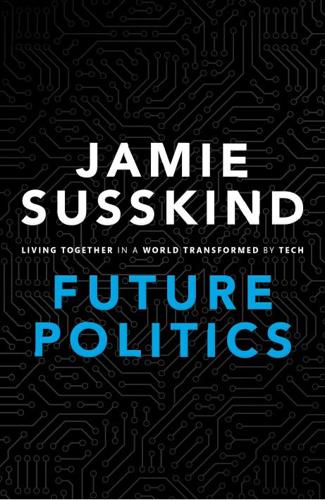
Future Politics: Living Together in a World Transformed by Tech
by
Jamie Susskind
Published 3 Sep 2018
Debiasing Word Embeddings’. arXiv, 21 Jul. 2016 <https://arxiv.org/ pdf/1607.06520.pdf> (accessed 3 Dec. 2017). Bonchi, Francesco, Carlos Castillo, and Sara Hajian. ‘Algorithmic Bias: From Discrimination Discovery to Fairness-aware Data Mining’. KDD OUP CORRECTED PROOF – FINAL, 28/05/18, SPi РЕЛИЗ ПОДГОТОВИЛА ГРУППА "What's News" VK.COM/WSNWS Bibliography 443 2016 Tutorial. <http://francescobonchi.com/tutorial-algorithmic-bias. pdf> (accessed 3 Dec. 2017). Booth, Robert. ‘Facebook Reveals News Feed Experiment to Control Emotions’. The Guardian, 30 Jun. 2004 <https://www.theguardian.com/ technology/2014/jun/29/facebook-users-emotions-news-feeds> (accessed 11 Dec. 2017).
…
This is just one way of assessing OUP CORRECTED PROOF – FINAL, 28/05/18, SPi РЕЛИЗ ПОДГОТОВИЛА ГРУППА "What's News" VK.COM/WSNWS Algorithmic Injustice 281 a lgorithmic injustice. One of the tasks for political theorists will be to find more. ‘Algorithmic Discrimination’ Different types of algorithmic injustice are sometimes lumped together under the name ‘algorithmic discrimination’. I avoid this term, along with the term algorithmic bias, because it can lead to confusion. Discrimination is a subtle concept with at least three acceptable meanings. The first is neutral, referring to the process of drawing distinctions between one thing and another. (If I say you are a highly discriminating art critic, I am praising your acuity and not calling you a bigot.)
…
Google and the Perpetuation of Stereotypes via Autocomplete Search Forms’, Critical Discourse Studies 10, no. 2 (2013) <http://www.tandfonline.com/doi/full/10.1080/17405904.2012.7 44320?scroll=top&needAccess=true> (accessed 3 December 2017). 14. Francesco Bonchi, Carlos Castillo, and Sara Hajian, ‘Algorithmic Bias: From Discrimination Discovery to Fairness-aware Data Mining’, KDD 2016 Tutorial <http://francescobonchi.com/tutorial-algorithmicbias.pdf> (accessed 3 December 2017). 15. Tom Slee, What’s Yours is Mine: Against the Sharing Economy (New York and London: OR Books, 2015), 94. 16. Slee, What’s Yours is Mine, 95. 17.

AI Superpowers: China, Silicon Valley, and the New World Order
by
Kai-Fu Lee
Published 14 Sep 2018
As public policy and personal values blend, we should really take the time to study new experiments in defining and measuring progress, such as Bhutan’s decision to pursue “Gross National Happiness” as a key development indicator. Finally, our governments will need to consistently look to one another in evaluating thorny new tradeoffs in data privacy, digital monopolies, online security, and algorithmic bias. In tackling these issues, we can learn much from comparing the different approaches taken by regulators in Europe, the United States, and China. While Europe has opted for a more heavy-handed approach (fining Google, for example, for antitrust and trying to wrest control over data away from the technology companies), China and the United States have given these companies greater leeway, letting technology and markets develop before intervening on the margins.
…
Index A | B | C | D | E | F | G | H | I | J | K | L | M | N | O | P | Q | R | S | T | U | V | W | X | Y | Z A Africa, 138, 139, 169 age of data, 14, 18, 56 age of implementation Chinese entrepreneurs and, 16, 18, 25 Chinese government and, 18 data and, 17, 20, 55, 80 deep learning and, 13–14, 143 going light vs. going heavy, 71 AGI (artificial general intelligence), 140–44 AI. See artificial intelligence (AI) AI engineers, 14 Airbnb, 39, 49, 73 AI revolution deep learning and, 5, 25, 92, 94, 143 economic impact of, 151–52 speed of, 152–55 AI winters, 6–7, 8, 9, 10 algorithmic bias, 229 algorithms, AI AI revolution and, 152–53 computing power and, 14, 56 credit and, 112–13 data and, 14, 17, 56, 138 fake news detection by, 109 intelligence sharing and, 87 legal applications for, 115–16 medical diagnosis and, 114–15 as recommendation engines, 107–8 robot reporting, 108 white-collar workers and, 167, 168 Alibaba Amazon compared to, 109 Chinese startups and, 58 City Brain, 93–94, 117, 124, 228 as dominant AI player, 83, 91, 93–94 eBay and, 34–35 financial services spun off from, 73 four waves of AI and, 106, 107, 109 global markets and, 137 grid approach and, 95 Microsoft Research Asia and, 89 mobile payments transition, 76 New York Stock Exchange debut, 66–67 online purchasing and, 68 success of, 40 Tencent’s “Pearl Harbor attack” on, 60–61 Wang Xing and, 24 Alipay, 35, 60, 69, 73–74, 75, 112, 118 Alphabet, 92–93 AlphaGo, 1–4, 5, 6, 11, 199 AlphaGo Zero, 90 Altman, Sam, 207 Amazon Alibaba compared to, 109 Chinese market and, 39 data captured by, 77 as dominant AI player, 83, 91 four waves of AI and, 106 grid approach and, 95 innovation mentality at, 33 monopoly of e-commerce, 170 online purchasing and, 68 Wang Xing and, 24 warehouses, 129–30 Amazon Echo, 117, 127 Amazon Go, 163, 213 Anderson, Chris, 130 Andreesen Horowitz, 70 Ant Financial, 73 antitrust laws, 20, 28, 171, 229 Apollo project, 135 app constellation model, 70 Apple, 33, 75, 117, 126, 143, 177, 184 Apple Pay, 75, 76 app-within-an-app model, 59 ARM (British firm), 96 Armstrong, Neil, 3 artificial general intelligence (AGI), 140–44 artificial intelligence (AI) introduction to, ix–xi See also China; deep learning; economy and AI; four waves of AI; global AI story; human coexistence with AI; new world order artificial superintelligence.
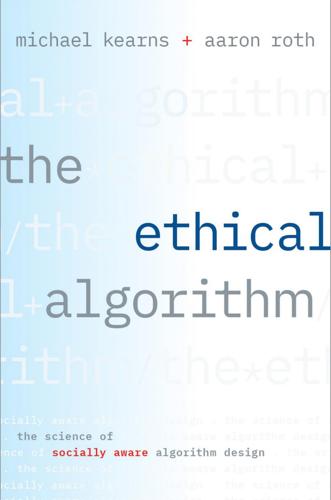
The Ethical Algorithm: The Science of Socially Aware Algorithm Design
by
Michael Kearns
and
Aaron Roth
Published 3 Oct 2019
By making this distinction, the algorithm is able to “subtract off” the bias in the data associated with nongendered words, thus reducing analogy completions like the one in the paper’s title, while still preserving “correct” analogies like “Man is to king as woman is to queen.” These are the themes of this chapter: scientific notions of algorithmic (and human) bias and discrimination, how to detect and measure them, how to design fairer algorithmic solution—and what the costs of fairness might be to predictive accuracy and other important objectives, just as we examined the costs to accuracy of differential privacy. We will eventually show how such costs can be made quantitative in the form of what are known as Pareto curves specifying the theoretical and empirical trade-offs between fairness and accuracy.
…
See also societal norms and values Hunch, 52–53, 68 hybrid models, 76–77 hypotheses, 153–54 IBM Research, 132 image classifiers, 181–82 image-creating algorithms, 132–33 ImageNet, 146–51, 160–63, 165 image recognition, 145–49, 162–63, 165–67, 175 incentives and algorithmic game theory, 101 and correlated equilibrium, 114–15 and differential privacy, 56 and differing notions of fairness, 85 and ethical issues of optimization, 189–90 and investing scams, 140–41 and medical residency hiring, 128 and navigation problems, 111–15 and p-hacking, 144–45 and scientific research, 136, 144–45 and user preferences, 97 income discrimination, 88–89 incriminating information, 40–45 individual preferences, 115–17 inference, 33, 51 Infinite Jest (Wallace), 118, 120 informational challenges, 104 input bias, 91 insurance rates, 38 intelligence explosion, 185–88 intentionality, 7 internal design of algorithms, 131 Internal Revenue Service (IRS), 49–50 Internet and availability of data, 66–67 and commerce, 64 Internet-derived data, 6–7 and theoretical computer science field, 13 Internet Movie Database (IMDB), 25–26 interpretability of outputs and algorithmic morality, 175–77 and current state of ethics research, 170–75 and General Data Protection Regulation, 15 and goals of ethics research, 170–71 investing scams, 137–41 Ioannidis, John, 143 iPhones, 47–48, 195 Jeopardy, 180 jump balls, 99–100 Kaggle, 146–47 k-anonymity, 27–30, 44 kidney donation matching, 130 King, Stephen, 118 k-nearest neighbors algorithm, 173 Kubrick, Stanley, 100 large datasets, 100–101, 151, 155 LA Weekly, 94 law enforcement access to data, 54–56 laws and regulations algorithms as regulatory measure, 16–17 bans on data uses, 39 and concerns about algorithm use, 3–4 and correlated equilibrium, 113 and differential privacy, 47–48 and “fairness gerrymandering,” 86–87 and fairness vs. accuracy of models, 77–78 and forbidden inputs, 66–67 and interpretability of model outputs, 172, 174 and investing scams, 138, 140–41 and navigation problems, 107 recent efforts to address machine learning issues, 14–15 and scale issues, 192 and scope of topics covered, 19–21 and shortcomings of anonymization methods, 24 and theoretical computer science field, 13–14 and the US Census, 49–50 Learner and Regulator game, 89 learning process, formal, 38–39 LeCun, Yann, 133 Legg, Shane, 179 lending and creditworthiness and algorithmic bias, 62 and algorithmic violations of fairness and privacy, 96 benefits of machine learning, 191–92 and concerns about algorithm use, 3 and criticisms of ethical algorithm efforts, 193–94 and “fairness gerrymandering,” 86–87 and interpretability of model outputs, 171–72, 174 “merit” and algorithmic fairness, 72–74, 84 and Pareto frontiers, 82–86 random lending, 69–71 and statistical parity, 69–72, 84 and unique challenges of algorithms, 8 Lewis, Amanda, 94–95, 97 linear models, 173 loan applications, 171–72, 174 local differential privacy, 46–47 local trust model, 47 location data and broken anonymity, 2–3 and scope of topics covered, 19–20 and shortcomings of anonymization methods, 23, 27–29 logistic regression, 173 Loken, Eric, 159 lung cancer research, 34–36, 39, 51, 53–54 lying, 111–12 machine learning and adaptive data analysis, 160–62 and aggregate data, 30 and algorithmic game theory, 101 and algorithmic morality, 176–77 and algorithms as regulatory measure, 16–17 contrasted with human learning, 6–7 criminal justice applications, 3 and dangers of adaptive data analysis, 151, 153–54 and data collection bias, 90–93 and differential privacy, 38–39, 52 and discrimination, 96 and echo chamber equilibrium, 124 and “fairness gerrymandering,” 87–90 and forbidden inputs, 68 generative adversarial network (GAN), 133 and Google’s “word embedding” model, 58 and image recognition competition, 145–49, 165–67 and interpretability of model outputs, 171–74 and limitations of differential privacy, 51 and “merit” in algorithmic fairness, 74 and Pareto frontier, 82 and product recommendation algorithms, 122–23 recent laws and regulations, 15 and scope of topics covered, 18–19 self-play in, 131–34 and theoretical computer science, 13 and unique challenges of algorithms, 7–11 and weaknesses of aggregate data, 31 and weaknesses of encryption, 32 and word embedding, 57–63 macroscopic efficiency, 112 Magrin, Lisa, 2–3 Manhattan Project, 17 markets, 177–78 Marriott, 32 Massachusetts Institute of Technology (MIT), 23 matching markets, 126–30 mathematical constraints, 37–38 mathematical literacy, 172.

Rule of the Robots: How Artificial Intelligence Will Transform Everything
by
Martin Ford
Published 13 Sep 2021
Suppose, however, that the past hiring decisions upon which the algorithm is trained reflect some degree of overt or subconscious racism or sexism on the part of hiring managers. In that case, the machine learning system will automatically pick up that bias as it goes through its normal training process. There is no nefarious intent on the part of the creators of the algorithm; the bias exists in the training data. The result would be a system that perpetuated, or perhaps even amplified, existing human biases and would be demonstrably unfair to people of color or women. Something very similar to this happened at Amazon in 2018 when the company halted development of a machine learning system because it was shown to be biased against women when screening resumes for technical positions.
…
AN EXISTENTIAL THREAT FROM SUPERINTELLIGENCE AND THE “CONTROL PROBLEM” The AI risk that transcends all others is the possibility that machines with superhuman intelligence might someday wrest themselves from our direct control and pursue a course of action that ultimately presents an existential threat to humanity. Security issues, weaponization and algorithmic bias all pose immediate or near-term dangers. These are concerns that we clearly need to be addressing right now—before it is too late. An existential threat from superintelligence, however, is far more speculative and almost certainly lies decades—or perhaps even a century or more—in the future.

Nexus: A Brief History of Information Networks From the Stone Age to AI
by
Yuval Noah Harari
Published 9 Sep 2024
In this society, an algorithm that hires new engineers is not only likely to copy this preexisting bias but also to infect the college recommendation algorithms with the same bias. A young woman entering college may be discouraged from studying engineering, because the existing data indicates she is less likely to eventually get a job. What began as a human intersubjective myth that “women aren’t good at engineering” might morph into an inter-computer myth. If we don’t get rid of the bias at the very beginning, computers may well perpetuate and magnify it.65 But getting rid of algorithmic bias might be as difficult as ridding ourselves of our human biases. Once an algorithm has been trained, it takes a lot of time and effort to “untrain” it.
…
Learning from previous successful and unsuccessful applications, the algorithm began to systematically downgrade applications simply for containing the word “women” or coming from graduates of women’s colleges. Since existing data showed that in the past such applications had less chance of succeeding, the algorithm developed a bias against them. The algorithm thought it had simply discovered an objective truth about the world: applicants who graduate from women’s colleges are less qualified. In fact, it just internalized and imposed a misogynist bias. Amazon tried and failed to fix the problem and ultimately scrapped the project.64 The database on which an AI is trained is a bit like a human’s childhood.
…
The European Union’s General Data Protection Regulation (GDPR), which came into effect in 2018, says that if an algorithm makes a decision about a human—refusing to extend us credit, for example—that human is entitled to obtain an explanation of the decision and to challenge that decision in front of some human authority.33 Ideally, that should keep in check algorithmic bias and allow democratic self-correcting mechanisms to identify and correct at least some of the computers’ more grievous mistakes. But can this right be fulfilled in practice? Mustafa Suleyman is a world expert on this subject. He is the co-founder and former head of DeepMind, one of the world’s most important AI enterprises, responsible for developing the AlphaGo program, among other achievements.

The Big Nine: How the Tech Titans and Their Thinking Machines Could Warp Humanity
by
Amy Webb
Published 5 Mar 2019
“Why the Future Doesn’t Need Us.” Wired, April 1, 2000. http://www.wired.com/wired/archive/8.04/joy.html. Kelly, K. The Inevitable: Understanding the 12 Technological Forces That Will Shape Our Future. New York: Viking, 2016. Kirkpatrick, K. “Battling Algorithmic Bias.” Communications of the ACM 59, no. 10 (2016): 16–17. https://cacm.acm.org/magazines/2016/10/207759-battling-algorithmic-bias/abstract. Knight, W. “AI Fight Club Could Help Save Us from a Future of Super-Smart Cyberattacks.” MIT Technology Review, July 20, 2017. https://www.technologyreview.com/s/608288/ai-fight-club-could-help-save-us-from-afuture-of-supersmart-cyberattacks/. .

System Error: Where Big Tech Went Wrong and How We Can Reboot
by
Rob Reich
,
Mehran Sahami
and
Jeremy M. Weinstein
Published 6 Sep 2021
They had not deliberately inserted that bias or actively programmed a “sexist algorithm.” Yet gender bias had crept in. The team attempted to adjust the code to neutralize the bias, but they could not rid the tool of all potential discrimination. After years of effort, Amazon decided to scrap its vision for the tool altogether and disband the team responsible for it. The Amazon case is a revealing one and sparks specific questions we should ask about the rise of automated decision-making tools: If one of the most powerful companies in the world can’t successfully build an algorithmic tool free of bias, can anyone? When new technologies are deployed to aid in or replace human decision-making, what standard of objectivity should we hold for their automated replacements?
…
In transforming how we teach technologists, we must also pay attention to whom we are teaching. Since new technologies encode the needs, perspectives, and values of those who create (and fund) them, it’s no surprise that the lack of diversity in tech companies is part of the problem. It helps explain algorithmic bias, an inattention to the ways that surveillance has been misused, a lack of concern for the distributional harms caused by automation, and the proliferation of hate speech online. The movement afoot among companies and funders to recruit, support, and retain a diverse field in technology is long overdue.
…
See artificial intelligence “Aims of Education” (Allen), xi Albrecht, Jan Philipp, 143 Alciné, Jacky, 86 algorithmic amplification of potentially harmful speech, 219 algorithmic decision-making, 79–109 accountability, 99–101 auditing, 105, 107–9 bias elimination, 80–82, 86–87, 101, 105–6 in criminal justice system, 94–99 defining fairness, 89–94 designing fair algorithms, 87–94 emphasis on producing efficient solutions, 11 engineers provide high-level descriptions of their models, 107–8 governing algorithms, 103–7 human bias introduced by data, 80–82, 83, 86, 101–3 job applicants gaming the system, 83–84, 102–3 key ingredients in the governance of, 105–7 machines that learn, 82–87, 109 transparency and auditing requirements, 105, 107–9 for “Traveling Salesperson Problem,” 12–13 Algorithmic Justice League, 241 Algorithms to Live By (Christian and Griffiths), 14 Allen, Danielle, xi, 70 Amazon, 4–5, 64–65, 79–82, 180.
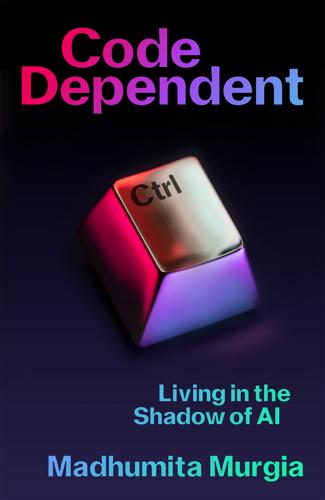
Code Dependent: Living in the Shadow of AI
by
Madhumita Murgia
Published 20 Mar 2024
Ala The next day, I am back at the Humans in the Loop office, and this time I recognize Hiba in a photo on the wall, her smiling face wrapped in a turquoise headscarf, standing with her graduating class. I am here to observe the workers’ training session. I sit down next to forty-four-year-old worker Ala Shaker Mahmoud. Today’s module includes a section on AI ethics – a new addition to the curriculum. The class is being introduced to concepts such as algorithm bias and transparency around informing end users of the use of AI systems. Afterwards, as the watery winter sun struggles valiantly to push through a high window, I speak with Ala. Up until 2007, he had been a travelling beekeeper in Mosul, the ancient Assyrian city of northern Iraq, flanked by desert and mountains.
…
But their healthcare needs were, on average, higher than white patients with equivalent health costs. This particular design error resulted in widespread racial bias in the AI system: the model was systematically prioritising healthier white patients over sicker black patients who needed the extra attention and care. The researchers calculated that the algorithm’s bias more than halved the number of black patients that should have been referred for special care. ‘Your costs are going to be lower even though your needs are the same. And that was the root of the bias that we found,’ Ziad said. He offered to help Optum redesign its AI using data that was more reflective of a patient’s actual health – which they did – and the redesign reduced the racial bias significantly.

The Coming Wave: Technology, Power, and the Twenty-First Century's Greatest Dilemma
by
Mustafa Suleyman
Published 4 Sep 2023
Talking about the ethics of machine learning systems is a world away from, say, the technical safety of synthetic bio. These discussions happen in isolated, echoey silos. They rarely break out. Yet I believe they are aspects of what amounts to the same phenomenon; they all aim to address different aspects of the same wave. It’s not enough to have dozens of separate conversations about algorithmic bias or bio-risk or drone warfare or the economic impact of robotics or the privacy implications of quantum computing. It completely underplays how interrelated both causes and effects are. We need an approach that unifies these disparate conversations, encapsulating all those different dimensions of risk, a general-purpose concept for this general-purpose revolution.
…
In 2022 the White House released a blueprint for an AI Bill of Rights with five core principles “to help guide the design, development, and deployment of artificial intelligence and other automated systems so that they protect the rights of the American public.” Citizens should, it says, be protected from unsafe and ineffective systems and algorithmic bias. No one should be forced to subject themselves to AI. Everyone has the right to say no. Efforts like this should be widely supported and quickly implemented. However, policy makers’ imaginations will need to match the scope of technology. Government needs to go further. For understandable reasons, we don’t let any business build or operate nuclear reactors in any way they see fit.

Outnumbered: From Facebook and Google to Fake News and Filter-Bubbles – the Algorithms That Control Our Lives
by
David Sumpter
Published 18 Jun 2018
Moreover, if we consider the individuals who weren’t shown the advert, we could be said to have discriminated against males. One in 11 of the men who didn’t see the advert were interested in the job, while only one in 27 of the women who didn’t see the advert were interested. Our new algorithm has a calibration bias that favours females. Table 6.3 Revised breakdown of the men and women shown an advert for our revised (thought experiment) Facebook campaign. Unfairness is like those whack-a-mole games at the fairground where the mole keeps popping up in different places. You hammer it down in one place and another one comes out somewhere else.
…
The unsupervised algorithms looking at what we write are not programmed to be prejudiced. When we look at what they have learnt about us, they simply reflect the prejudice of the social world we live in. I also thought back to my discussion with Michal Kosinski. Michal had been very enthusiastic about the possibility of algorithms eliminating bias. And, as he predicted, researchers were already proposing tools for extracting information about applicants’ qualities and experience from their CVs.9 One Danish start-up, Relink, is using techniques similar to GloVe to summarise cover letters and match applicants to jobs. But looking more deeply at how the GloVe model works, I had found good reason to be cautious about this approach.
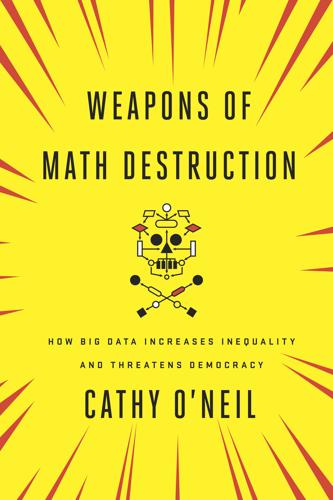
Weapons of Math Destruction: How Big Data Increases Inequality and Threatens Democracy
by
Cathy O'Neil
Published 5 Sep 2016
If you plot year-to-year scores on a chart: Gary Rubinstein, “Analyzing Released NYC Value-Added Data Part 2,” Gary Rubinstein’s Blog, February 28, 2012, http://garyrubinstein.teachforus.org/2012/02/28/analyzing-released-nyc-value-added-data-part2/. as the computer scientist Cynthia Dwork has noted: Claire Cain Miller, “Algorithms and Bias: Q. and A. with Cynthia Dwork,” New York Times, August 10, 2015, www.nytimes.com/2015/08/11/upshot/algorithms-and-bias-q-and-a-with-cynthia-dwork.html. Web Transparency and Accountability Project: Elizabeth Dwoskin, “How Social Bias Creeps into Web Technology,” Wall Street Journal, August 21, 2015, www.wsj.com/articles/computers-are-showing-their-biases-and-tech-firms-are-concerned-1440102894.

Artificial Unintelligence: How Computers Misunderstand the World
by
Meredith Broussard
Published 19 Apr 2018
Index Abacus, 75 Ability beliefs, 83 Academy at Palumbo, 56–57 Ackerman, Arlene, 58–59 Activism, cyberspace, 82–83 Adair, Bill, 45 AI Now Institute, 194–195 AirBnB, 168 Albrecht, Steve, 159 Alda, Alan, 70 Alexa, 38–39, 72 Alexander, Michelle, 159 Algorithmic accountability reporting, 7, 43–44, 65–66 Algorithms bias in, 44, 150, 155–157, 195 defined, 7, 94 elevator, 157 function of, 43–44 risk, 44, 155–156 tic-tac-toe, 34 Alphabet, 96 AlphaGo, 33–37 Amazon, 115, 158 Analytical engine, 76 Anarcho-capitalism, 83 Anderson, C. W., 46–47 Angwin, Julia, 154–156 App hackathons, 165–174 Apple Watch, 157 Artificial intelligence (AI) beginnings, 69–73 expert systems, 52–53, 179 fantasy of, 132 in film, 31, 32, 198 foundations of, 9 future of, 194–196 games and, 33–37 general, 10–11, 32 narrow, 10–11, 32–33, 97 popularity of, 90 real vs. imagined, 31–32 research, women in, 158 sentience challenge in, 129 Asimov, Isaac, 71 Assembly language, 24 Association for Computing Machinery (ACM), 145 Astrolabe, 76 Asymmetry, positive, 28 Automation technology, 176–177 Autopilot, 121 Availability heuristic, 96 Babbage, Charles, 76–77 Bailiwick (Broussard), 182–185, 190–191, 193 Barlow, John Perry, 82–83 Bell Labs, 13 Bench, Shane, 84 Ben Franklin Racing Team (Little Ben), 122–127 Berkman Klein Center (Harvard), 195 Berners-Lee, Tim, 4–5, 47 Bezos, Jeff, 73, 115 Bias in algorithms, 44, 150, 155–157 in algorithms, racial, 44, 155–156 genius myth and, 83–84 programmers and, 155–158 in risk ratings, 44, 155–156 in STEM fields, 83–84 Bill & Melinda Gates Foundation, 60–61, 157 Bipartisan Campaign Reform Act, 180 Bitcoin, 159 Bizannes, Elias, 165, 166, 171 Blow, Charles, 95 Boggs, David, 67–68 Boole, George, 77 Boolean algebra, 77 Borden, Brisha, 154–155 Borsook, Paulina, 82 Bowhead Systems Management, 137 boyd, danah, 195 Bradley, Earl, 43 Brains 19–20, 95, 128–129, 132, 144, 150 Brand, Stewart, 5, 29, 70, 73, 81–82 Brin, Sergei, 72, 151 Brown, Joshua D., 140, 142 Bump, Philip, 186 Burroughs, William S., 77 Burroughs, William Seward, 77 Calculation vs. consciousness, 37 Cali-Fame, 186 California, drug use in, 158–159 Cameron, James, 95 Campaign finance, 177–186, 191 Čapek, Karel, 129 Caprio, Mike, 170–171 Carnegie Mellon University, autonomous vehicle research ALVINN, 131 University Racing Team (Boss), 124, 126–127, 130–131 Cars deaths associated with, 136–138, 146 distracted driving of, 146 human-centered design for, 147 Cars, self-driving 2005 Grand Challenge, 123–124 2007 Grand Challenge, 122–127 algorithms in, 139 artificial intelligence in, 129–131, 133 deaths in, 140 driver-assistance technology from, 135, 146 economics of, 147 experiences in, 121–123, 125–126, 128 fantasy of, 138, 142, 146 GPS hacking, 139 LIDAR guidance system, 139 machine ethics, 144–145, 147 nausea in, 121–123 NHTSA categories for, 134 problems/limitations, 138–140, 142–146 research funding, 133 SAE standards for levels of automation, 134–135 safety, 136–137, 140–142, 143, 146 sentience in, 132 Uber’s use of, 139 Udacity open-source car competition, 135 Waymo technology, 136 CERN, 4–5 Cerulo, Karen A., 28 Chess, 33 Children’s Online Privacy Protection Act (COPPA), 63–64 Chinese Room argument, 38 Choxi, Heteen, 122 Christensen, Clayton, 163 Chrome, 25, 26 Citizens United, 177, 178, 180 Clarke, Arthur C., 71–72 Client-server model, 27 Clinkenbeard, John, 172 Cloud computing, 26, 52, 196 Cohen, Brian, 56–57 Collins, John, 117 Common Core State Standards, 60–61 Communes, 5, 10 Computer ethics, 144–145 Computer Go, 34–36 Computers assumptions about vs. reality of, 8 components, identifying, 21–22 consciousness, 17 early, 196–199 human, 77–78, 198 human brains vs., 19–20, 128–129, 132, 144, 150 human communication vs., 169–170 human mind vs., 38 imagination, 128 limitations, 6–7, 27–28, 37–39 memory, 131 modern-day, development of, 75–79 operating systems, 24–25 in schools, 63–65 sentience, 17, 129 Computer science bias in, 79 ethical training, 145 explaining the world through, 118 women in, 5 Consciousness vs. calculation, 37 Constants in programming, 88 Content-management system (CMS), 26 Cooper, Donna, 58 Copeland, Jack, 74–75 Correctional Offender Management Profiling for Alternative Sanctions (COMPAS), 44, 155–156 Cortana, 72 Counterculture, 5, 81–82 Cox, Amanda, 41–42 Crawford, Kate, 194 Crime reporting, 154–155 CTB/McGraw-Hill, 53 Cumberbatch, Benedict, 74 Cyberspace activism, 82–83 DarkMarket, 159 Dark web, 82 Data on campaign finance, 178–179 computer-generated, 18–19 defined, 18 dirty, 104 generating, 18 people and, 57 social construction of, 18 unreasonable effectiveness of, 118–119, 121, 129 Data & Society, 195 DataCamp, 96 Data density theory, 169 Data journalism, 6, 43–47, 196 Data Journalism Awards, 196 Data journalism stories cost-benefit of, 47 on inflation, 41–42 Parliament members’ expenses, 46 on police speeding, 43 on police stops of people of color, 43 price discrimination, 46 on sexual abuse by doctors, 42–43 Data Privacy Lab (Harvard), 195 Data Recognition Corporation (DRC), 53 Datasets in machine learning, 94–95 Data visualizations, 41–42 Deaths distracted driving accidents, 146 from poisoning, 137 from road accidents, 136–138 in self-driving cars, 140 Decision making computational, 12, 43, 150 data-driven, 119 machine learning and, 115–116, 118–119 subjective, 150 Deep Blue (IBM), 33 Deep learning, 33 Defense Advanced Research Projects Agency (DARPA) Grand Challenge, 123, 131, 133, 164 Desmond, Matthew, 115 Detroit race riots story, 44 Dhondt, Rebecca, 58 Diakopoulos, Nicholas, 46 Difference engine, 76 Differential pricing and race, 116 Digital age, 193 Digital revolution, 193–194 Dinakar, Karthik, 195 Django, 45, 89 DocumentCloud, 52, 196 Domino’s, 170 Drone technology, 67–68 Drug marketplace, online, 159–160 Drug use, 80–81, 158–160 Duncan, Arne, 51 Dunier, Mitchell, 115 Edison, Thomas, 77 Education change, implementing in, 62–63 Common Core State Standards, 60–61 competence bar in, 150 computers in schools, 63–65 equality in, 77–78 funding, 60 supplies, availability of, 58 technochauvinist solutions for, 63 textbook availability, 53–60 unpredictability in, 62 18F, 178–179 Electronic Frontier Foundation, 82 Elevators, 156–157 Eliza, 27–28 Emancipation Proclamation, 78 Engelbart, Doug, 25, 80–81 Engineers, ethical training, 145 ENIAC, 71, 194, 196–199 Equality in education, 77–78 techno hostility toward, 83 technological, creating, 87 technology vs., 115, 156 for women, 5, 77–78, 83–85, 158 Essa, Irfan, 46 Ethics, 144–145, 147 EveryBlock, 46 Expertise, cognitive fallacies associated, 83 Expert systems, 52–53, 179 Facebook, 70, 83, 152, 158, 197 Facial recognition, 157 Fact checking, 45–46 Fake news, 154 Family Educational Rights and Privacy Act (FERPA), 63–64 FEC, McCutcheon v., 180 FEC, Speechnow.org v., 180 FEC.gov, 178–179 Film, AI in, 31, 32, 198 FiveThirtyEight.com, 47 Foote, Tully, 122–123, 125 Ford Motor Company, 140 Fowler, Susan, 74 Fraud campaign finance, 180 Internet advertising, 153–154 Free press, role of, 44 Free speech, 82 Fuller, Buckminster, 74 Futurists, 89–90 Games, AI and, 33–37 Gates, Bill, 61 Gates, Melinda, 157–158 Gawker, 83 Gender equality, hostility toward, 83 Gender gap, 5, 84–85, 115, 158 Genius, cult of, 75 Genius myth, 83–84 Ghost-in-the-machine fallacy, 32, 39 Giffords, Gabby, 19–20 GitHub, 135 Go, 33–37 Good Old-Fashioned Artificial Intelligence (GOFAI), 10 Good vs. popular, 149–152, 160 Google, 72 Google Docs, 25 Google Maps API, 46 Google Street View, 131 Google X, 138, 151, 158 Government campaign finance, 177–186, 191 cyberspace activism, antigovernment ideology, 82–83 tech hostility toward, 82–83 Graphical user interface (GUI), 25, 72 Greyball, 74 Guardian, 45, 46 Hackathons, 165–174 Hackers, 69–70, 82, 153–154, 169, 173 Halevy, Alon, 119 Hamilton, James T., 47 Harley, Mike, 140 Harris, Melanie, 58–59 Harvard, Andrew, 184 Harvard University Berkman Klein Center, 195 Data Privacy Lab, 195 mathematics department, 84 “Hello, world” program, 13–18 Her, 31 Hern, Alex, 159 Hernandez, Daniel, Jr., 19 Heuristics, 95–96 Hillis, Danny, 73 Hippies, 5, 82 HitchBOT, 69 Hite, William, 58 Hoffman, Brian, 159 Holovaty, Adrian, 45–46 Home Depot, 46, 115, 155 Hooke, Robert, 88 Houghton Mifflin Harcourt (HMH) HP, 157 Hugo, Christoph von, 145 Human-centered design, 147, 177 Human computers, 77–78, 198 Human error, 136–137 Human-in-the-loop systems, 177, 179, 187, 195 Hurst, Alicia, 164 Illinois quarter, 153–154 Imagination, 89–90, 128 Imitation Game, The (film), 74 Information industry, annual pay, 153 Injury mortality, 137 Innovation computational, 25 disruptive, 163, 171 funding, 172–173 hackathons and, 166 Instacart, 171 Intelligence in machine learning Interestingness threshold, 188 International Foundation for Advanced Study, 81 Internet advertising model, 151 browsers, 25, 26 careers, annual pay rates, 153 core values, 150 drug marketplace, 159–160 early development of the, 5, 81 fraud, 153–154 online communities, technolibertarianism in culture of, 82–83 rankings, 72, 150–152 Internet Explorer, 25 Internet pioneers, inspiration for, 5, 81–82 Internet publishing industry, annual pay, 153 Internet search, 72, 150–152 Ito, Joi, 147, 195 Jacquard, Joseph Marie, 76 Java, 89 JavaScript, 89 Jobs, Steve, 25, 70, 72, 80, 81 Jones, Paul Tudor, 187–188 Journalism.
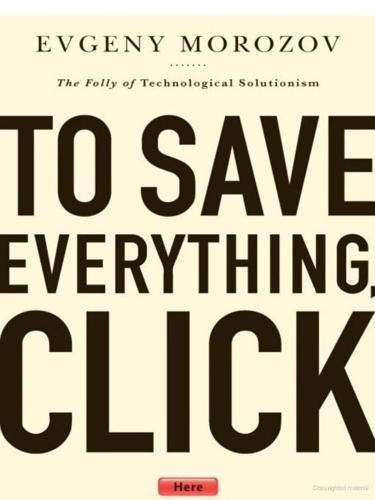
To Save Everything, Click Here: The Folly of Technological Solutionism
by
Evgeny Morozov
Published 15 Nov 2013
EdgeRank chooses which news items—from the thousands shared by your friends—you should see when you log into the site. According to Bucher’s research, Facebook wants to feed us stuff with high meme potential; thus, it studies what kinds of stories—from which friends? on which subjects?—users tend to click on most often. Bucher even writes of “the algorithmic bias towards making those stories that signify engagement more visible than those that do not.” There is nothing wrong with this attitude per se, but as with Twitter, it does embody a certain vision of how public life should function and what it should reward, and it does make meme manufacturing easier.
…
Algorithmic Power and the Threat of Invisibility on Facebook,” New Media & Society 14, no. 7 (2012), available at http://nms.sagepub.com/content/14/7/1164; Bucher, “The Friendship Assemblage: Investigating Programmed Sociality on Facebook,” Television & New Media, August 2012, http://tvn.sagepub.com/content/early/2012/08/14/1527476412452800.abstract; and Bucher, “A Technicity of Attention: How Software Makes Sense,’” Culture Machine 13 (2012), http://culturemachine.net/index.php/cm/article/viewArticle/470. 158 “the algorithmic bias towards making those stories”: Bucher, “Algorithmic Power.” 158 Media scholar C. W. Anderson: C. W. Anderson, “Deliberative, Agonistic, and Algorithmic Audiences: Journalism’s Vision of Its Public in an Age of Audience Transparency,” International Journal of Communication 5 (2011): 529–547. 159 “If something is a total bummer”: quoted in Ryan Holiday, Trust Me, I’m Lying, 62. 159 “The economics of the web”: ibid., 62. 159 “efficiencies and the new breadth of artists”: Christopher Steiner, Automate This: How Algorithms Came to Rule Our World (New York: Portfolio Hardcover, 2012), 86. 160 historians of science Peter Galison and Lorraine Daston: Lorraine J.

Your Computer Is on Fire
by
Thomas S. Mullaney
,
Benjamin Peters
,
Mar Hicks
and
Kavita Philip
Published 9 Mar 2021
Germaine Moore, the suspect in the viral video case, was virtually undetectable, appearing in a video rather than still image and having never had his photograph logged in a prior arrest database against which to match his face. Further still, as a person of color Moore remains less detectable by facial-recognition algorithms that continue to bias accuracy toward white male faces.8 Apprehending Is Embodied Sensing To police is to apprehend—to recognize. Recognition is recall, data processing, and identification. To recognize is to bring close, to know again, to make one’s own. Recognition is a condition of proximity and closeness, or how near both beloved and despised people are presumed to be.
…
Part of my task in recording this history has been to convince these women that their contributions were important and that historians do value what they have to say. 13. Hicks, Programmed Inequality, 1–3. 14. For more on this, and a case study of one of the earliest examples of mainframe-era transphobic algorithmic bias, see Mar Hicks, “Hacking the Cis-tem: Transgender Citizens and the Early Digital State,” IEEE Annals of the History of Computing 41, no. 1 (January–March 2019): 20–33, https://doi.org/10.1109/MAHC.2019.2897667. 15. Hicks, Programmed Inequality, 90–93. 16. Hicks, Programmed Inequality, 93–96. 17.

The Rationalist's Guide to the Galaxy: Superintelligent AI and the Geeks Who Are Trying to Save Humanity's Future
by
Tom Chivers
Published 12 Jun 2019
This method became particularly famous around the 2012 US presidential election, when Nate Silver, editor-in-chief of the website FiveThirtyEight.com, correctly predicted which way all 50 states would end up voting. He did it using exactly these methods: having a prior and then updating it with evidence, in the form of new polls. (The new polls were added to the database using an algorithm, thus taking human bias out of the equation, to a degree.) The site would – and still does – give percentage estimates for each event it predicted. The idea is that it can go back and grade itself: as we saw earlier in Tetlock’s experiment, if its 75 per cent bets come in 75 per cent of the time, then it’s well calibrated.
…
Elon Musk, Peter Thiel, Dustin Moskowitz are the big-name funders behind it, and perhaps it isn’t surprising that these software tycoons all think that good software is needed to save the world. And, as various people have muttered to me during the writing of this book, they seem to be less vocal about the sort of problems – privacy, surveillance, filter bubbles, fake news, algorithmic bias – that their software is creating. It’s fun to sound noble and far-sighted, warning of the dangers of a technical problem still to come; it’s less fun to address the criticisms people are making of what you and your peers are doing right now. Fiennes notes that GiveWell and OpenPhil don’t mention a lot of major areas of possible philanthropy.

The Alignment Problem: Machine Learning and Human Values
by
Brian Christian
Published 5 Oct 2020
In one of the first articles explicitly addressing the notion of bias in computing systems, the University of Washington’s Batya Friedman and Cornell’s Helen Nissenbaum had warned that “computer systems, for instance, are comparatively inexpensive to disseminate, and thus, once developed, a biased system has the potential for widespread impact. If the system becomes a standard in the field, the bias becomes pervasive.”40 Or, as Buolamwini herself puts it, “Halfway around the world, I learned that algorithmic bias can travel as quickly as it takes to download some files off of the internet.”41 After a Rhodes Scholarship at Oxford, Buolamwini came to the MIT Media Lab, and there she began working on an augmented-reality project she dubbed the “Aspire Mirror.” The idea was to project empowering or uplifting visuals onto the user’s face—making the onlooker transform into a lion, for instance.
…
Amodei et al., “Concrete Problems in AI Safety.” gives an overview of this issue, which comes up in various subsequent chapters of this book. 37. Hardt, “How Big Data Is Unfair.” 38. Jacky Alciné, personal interview, April 19, 2018. 39. Joy Buolamwini, “How I’m Fighting Bias in Algorithms,” https://www.ted.com/talks/joy_buolamwini_how_i_m_fighting_bias_in_algorithms. 40. Friedman and Nissenbaum, “Bias in Computer Systems.” 41. Buolamwini, “How I’m Fighting Bias in Algorithms.” 42. Huang et al., “Labeled Faces in the Wild.” 43. Han and Jain, “Age, Gender and Race Estimation from Unconstrained Face Images.” 44. The estimate used here is 252 faces of Black women, arrived at by multiplying the proportion of women in the dataset (2,975/13,233) by the proportion of Black individuals in the dataset (1,122/13,233); numbers from Han and Jain. 45.

Stories Are Weapons: Psychological Warfare and the American Mind
by
Annalee Newitz
Published 3 Jun 2024
They’ll be able to distinguish between violent threats and democratic debate and separate the deliberate lies from honest mistakes. Slow media We also need to rebuild social media systems to prioritize human choice rather than algorithmic chaos. I talked about this idea with Safiya Umoja Noble, a UCLA professor who studies algorithmic bias and wrote the influential book Algorithms of Oppression. She likes to compare doomscrolling on social media to other addictive behaviors, like smoking. Smoking is a good parallel because many regions now restrict where people can smoke and require companies to put warning labels on cigarettes.

Don't Be Evil: How Big Tech Betrayed Its Founding Principles--And All of US
by
Rana Foroohar
Published 5 Nov 2019
Eventually, they decided to “stop being British,” as Shivaun put it to me, and take their case to the regulators, which is how Foundem became the lead complainant in the European Commission’s Google Search antitrust case, launched in 2009. It was led by the tough-as-nails EU competition chief, Margrethe Vestager, who eventually found against the firm in 2017. In compliance with EU law, Google was given eighteen months to figure out a way to rejigger its algorithms to eliminate bias in search. But in late 2018, the Raffs sent a letter to the commissioner, telling her that they were unpersuaded that the Google “compliance mechanism,” which depended once again on its own black box algorithmic formulas, was working. “It has now been more than a year since Google introduced its auction-based ‘remedy’ and the harm to competition, consumers, and innovation caused by Google’s illegal conduct has continued unabated,” they wrote.
…
“A recurring pattern has developed,” says Frank Pasquale at the University of Maryland, “in which some entity complains about a major Internet company’s practices, the company claims that its critics don’t understand how its algorithms sort and rank content, and befuddled onlookers are left to sift through rival stories in the press.” Companies should be prepared to make themselves open to algorithmic audits, as suggested by mathematician and Big Tech critic Cathy O’Neil, in case of complaints or concerns about algorithmic bias that could allow for discrimination in the workplace, healthcare, education, and so on.7 Individuals should also have their digital rights legalized. Former Wired editor John Battelle has proposed a digital bill of rights that would assign possession of data to its true owner, which is, of course, the user and generator of that data, not the company that made off with it.

Big Data and the Welfare State: How the Information Revolution Threatens Social Solidarity
by
Torben Iversen
and
Philipp Rehm
Published 18 May 2022
Journal of Economic Perspectives 12(2): 41–62. Lane, Jan-Erik. 2000. New Public Management: An Introduction. Taylor & Francis. Lane, Julia. 2020. Democratizing Our Data: A Manifesto. MIT Press. Lee, Nicol Turner, Paul Resnick, and Genie Barton. 2019. Algorithmic Bias Detection and Mitigation: Best Practices and Policies to Reduce Consumer Harms. Brookings Institute. www.brookings.edu/research/algorithmic-bias-det ection-and-mitigation-best-practices-and-policies-to-reduce-consumer-harms/. Leeuwen, Marco H. D. Van. 2016. Mutual Insurance 1550-2015: From Guild Welfare and Friendly Societies to Contemporary Micro-Insurers. Springer.

Prediction Machines: The Simple Economics of Artificial Intelligence
by
Ajay Agrawal
,
Joshua Gans
and
Avi Goldfarb
Published 16 Apr 2018
Sweeney, “Discrimination in Online Ad Delivery,” Communications of the ACM 56, no. 5 (2013): 44–54, https://dataprivacylab.org/projects/onlineads/. 2. Ibid. 3. “Racism Is Poisoning Online Ad Delivery, Says Harvard Professor,” MIT Technology Review, February 4, 2013, https://www.technologyreview.com/s/510646/racism-is-poisoning-online-ad-delivery-says-harvard-professor/. 4. Anja Lambrecht and Catherine Tucker, “Algorithmic Bias? An Empirical Study into Apparent Gender-Based Discrimination in the Display of STEM Career Ads” (paper presented at the NBER Summer Institute, July 2017). 5. Diane Cardwell and Libby Nelson, “The Fire Dept. Tests That Were Found to Discriminate,” New York Times, July 23, 2009, https://cityroom.blogs.nytimes.com/2009/07/23/the-fire-dept-tests-that-were-found-to-discriminate/?

AIQ: How People and Machines Are Smarter Together
by
Nick Polson
and
James Scott
Published 14 May 2018
Many people, when they hear about something as shocking as a secret algorithm handing down prison sentences in a racially biased way, reach a simple conclusion: that artificial intelligence should play no role whatsoever in the criminal justice system. While we’re as shocked and angry as anyone, we think that’s the wrong conclusion. Yes, we must all fight algorithmic bias when it arises. To do that, we need constant vigilance by experts: people who know the law but who also know AI, and who are empowered to act if they see a threat to justice. But even as we acknowledge the pitfalls of using AI to help people make important decisions, and even as we echo the call for transparency and fairness to become defining values of this new age, let’s not forget that there’s also incredible potential here.

Off the Edge: Flat Earthers, Conspiracy Culture, and Why People Will Believe Anything
by
Kelly Weill
Published 22 Feb 2022
When I left a Flat Earth lecture to use the bathroom at a 2018 conference, I returned to find multiple business cards for Flat Earth YouTube channels on my empty chair. While walking from one room to another, someone pushed a CD full of a Flat Earth YouTuber’s music into my hands. While earnest Flat Earthers were handing out business cards and CDs, other opportunists were circling the scene. YouTube’s algorithmic bias toward Flat Earth has led Globe Earth YouTubers to make Flat Earth films and leech off the movement’s growing notoriety. “There was a whisper that was being passed around content creators—not just ours but other people—that if you made a Flat Earth video, you would get more hits and you would get five hundred percent more comments, which track into the YouTube algorithm,” Sargent told me.

Leadership by Algorithm: Who Leads and Who Follows in the AI Era?
by
David de Cremer
Published 25 May 2020
Even more so, their inability to take the perspective of others makes them unable to make decisions on behalf of others and, as such, are perceived as incapable of leadership. Let us consider again Amazon’s experiment to use an algorithm to automate their recruitment process. This case taught us that the employed algorithm duplicated the human bias to favor men over women for the specific software development jobs they were advertising. As I just mentioned, it is not just algorithms, but humans too, that make such biased judgments. The difference is that humans are aware of the social consequences that emerge from the employment of this biased practice.
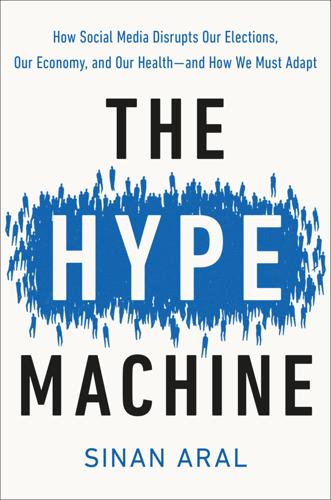
The Hype Machine: How Social Media Disrupts Our Elections, Our Economy, and Our Health--And How We Must Adapt
by
Sinan Aral
Published 14 Sep 2020
Given that Facebook is now the largest news outlet on the planet, with an audience greater than any Western television news network, newspaper, magazine, or online publication, it’s important to consider whether its newsfeed algorithm biases our exposure to different news sources, and whether its content-curation policies favor particular political views. (I’ll discuss whether social media should be regulated like traditional media in Chapter 12, but for now, it’s important to understand how algorithmic curation works. I’ll explore the effects of algorithmic curation on bias and polarization in news consumption in detail in Chapter 10.) Newsfeeds rank content according to its relevance. Each piece of content is given a relevance score that is unique to each of us and is sorted to appear in decreasing relevance order in our newsfeeds. Relevance is scored by predictive models that learn what drives us to interact with a piece of content.
…
A National Commission on Technology and Democracy In researching this book, I watched hours of congressional testimony by tech executives like Mark Zuckerberg, Jack Dorsey, Sundar Pichai, and Susan Wojcicki. I watched testimony on privacy, antitrust, election manipulation, data protection, algorithmic bias, and the role of social media in vaccine hesitancy, free speech, political bias, filter bubbles, and fake news. I got one overwhelming feeling from watching congressmen and -women question tech executives: we need more experts leading the way. Charting our technological future will be complex, technical, and nuanced.

Custodians of the Internet: Platforms, Content Moderation, and the Hidden Decisions That Shape Social Media
by
Tarleton Gillespie
Published 25 Jun 2018
See freedom of speech flagging, (i), (ii), (iii); limited vocabulary of, (i), (ii); can be gamed, (i), (ii); and the drag queen controversy, (i); as strategically valuable for platforms, (i); as labor, (i); who actually does it, (i); as data that could be offered back to users, (i) Flickr (Yahoo): community guidelines, (i), (ii), (iii); approach to moderation (i), (ii), (iii); and the NIPSA guideline, (i); response to international obligations, (i) Flyverbom, Mikkel, (i)n4 Foursquare (social networking platform), (i), (ii), (iii) Free the Nipple, (i) “freedom from porn” (i), (ii) freedom of speech: and the regulation of traditional media, (i), (ii), (iii); and global values, (i), (ii), (iii); as a commitment of platforms, (i), (ii), (iii), (iv), (v), (vi), (vii), (viii); and the early web, (i); and cyberporn, (i); and private intermediaries, (i), (ii), (iii), (iv); and defamation, (i); and digital copyright, (i) Friendster (social networking platform), (i) Gadde, Vitaya (Twitter), (i) game worlds, moderation of, (i), (ii) Gamergate, (i), (ii), (iii) gatekeepers, (i), (ii), (iii) Gawker, (i) #gay, blocked by Tumblr, (i), (ii) Geiger, Stuart, (i) gender, (i), (ii), (iii), (iv) Google: and political content, (i), (ii); community guidelines, (i), (ii), (iii), (iv), (v)n24; approach to moderation, (i), (ii), (iii); and algorithmic bias, (i); and automatic detection, (i); moderation of the Autocomplete function, (i), (ii)n31; and filtering, (i); and fake news / Russian ad controversies, (i), (ii)n40 Google Glass, (i), (ii) Google Image Search, (i), (ii) Google Maps, (i) Google Play (app store), (i), (ii) Google Translate, (i) Google Trends, (i) Google+, (i), (ii), (iii) graphic content, rules regarding, (i) Gray, Mary, (i), (ii)n105 Gregoire, Carolyn, (i) Grindr (dating app), (i), (ii) The Guardian, (i), (ii), (iii) Hansen, Espen Egil, (i) harassment: and Twitter, (i), (ii), (iii), (iv), (v)n2, (vi)n5; before social media, (i); rules regarding, (i), (ii); and flagging, (i), (ii); automated detection of, (i), (ii) Harvey, Del (Twitter), (i) hashing, (i) hate speech: and Twitter, (i); before social media, (i); legal obligations regarding, (i); rules regarding, (i); Apple’s “enemies” rule, (i); automated detection of, (i), (ii); and Google, (i) Heartmob, (i) Hebron, Micol, (i) Heffernan, Virginia, (i) Herrman, John, (i) Hey Facebook, Breastfeeding Is Not Obscene!

Who’s Raising the Kids?: Big Tech, Big Business, and the Lives of Children
by
Susan Linn
Published 12 Sep 2022
Robb, News and America’s Kids: How Young People Perceive and Are Impacted by the News (San Francisco: Common Sense Media, 2017), 5. 29. Tate-Ryan Mosely, “How Digital Beauty Filters Perpetuate Colorism,” MIT Technology Review, August 15, 2021, www.technologyreview.com/2021/08/15/1031804/digital-beauty-filters-photoshop-photo-editing-colorism-racism. 30. Alex Hern, “Student Proves Twitter Algorithm ‘Bias’ Toward Lighter, Slimmer, Younger Faces,” The Guardian, August 10, 2021. 31. Christopher P. Barton and Kyle Somerville, Historical Racialized Toys in the United States (Guides to Historical Artifacts) (New York: Rout-ledge, 2016), 17–18. 32. Kirsten Weir, “Raising Anti-Racist Children.

Mood Machine: The Rise of Spotify and the Costs of the Perfect Playlist
by
Liz Pelly
Published 7 Jan 2025
v=L41mZRY_Maw. 18 Ugwu, “Inside the Playlist Factory.” 19 Spotify Charts website: https://charts.spotify.com/home. 20 “Playlisting Plus” on YouTube. 21 For a peak playlist era account of Spotify editors being obsessed with “leveling the playing field,” see this Kaitlyn Tiffany piece from 2017: https://www.theverge.com/2017/11/13/16617900/spotify-playlist-curation-nyc-live-shows-fresh-finds-indie-latin-new-music. 22 David Pierce, “The Secret Hit-Making Power of the Spotify Playlist,” Wired, May 3, 2017, https://www.wired.com/2017/05/secret-hit-making-power-spotify-playlist/. 23 “Quora Session with Daniel Ek,” https://www.quora.com/profile/Daniel-Ek. 24 Pauline Oliveros, Deep Listening: A Composer’s Sound Practice (Deep Listening Publications, 2005). 25 Tia DeNora, Music in Everyday Life (Cambridge University Press, 2000). 26 Stuart Dredge, “Spotify data reveals boom in sleep and relaxation albums,” Guardian, September 7, 2015, https://www.theguardian.com/technology/2015/sep/07/spotify-data-sleep-relaxation-albums. 4 The Conquest of Chill 1 Stuart Elliott, “Spotify, New to Advertising, Says ‘I’ve Got the Music in Me,’ ” New York Times, March 25, 2013, https://archive.nytimes.com/mediadecoder.blogs.nytimes.com/2013/03/25/spotify-new-to-advertising-says-ive-got-the-music-in-me/. 2 Julie Beck, “Hard Feelings: Science’s Struggle to Define Emotions,” Atlantic, February 25, 2014; Ned Carter Miles, “Are You 80% Angry and 2% Sad? Why ‘Emotional AI’ Is Fraught with Problems,” Guardian, June 23, 2024, https://www.theguardian.com/technology/article/2024/jun/23/emotional-artificial-intelligence-chatgpt-4o-hume-algorithmic-bias. 3 Michael Sherman article on “Edison Mood Music” published by the Discography of American Historical Recordings website, a project of the UC Santa Barbara Library, https://adp.library.ucsb.edu/index.php/resources/detail/434; Alexandra Hui, “Lost: Thomas Edison’s Mood Music Found: New Ways of Listening,” Endeavour 38 (2014): 139−142. 4 Sherman, “Edison Mood Music”; Hui, “Lost: Thomas Edison’s Mood Music Found.” 5 Hui, “Lost: Thomas Edison’s Mood Music Found.” 6 Beverly Beyette, “Humming Right Along: It’s a far cry from a haphazard menu of music.

AI in Museums: Reflections, Perspectives and Applications
by
Sonja Thiel
and
Johannes C. Bernhardt
Published 31 Dec 2023
There is no right answer. The bases of decision-making change over time and are distributed. Each institution has its own character; the forces acting on decision-making are many. Most importantly, there are human beings behind the decisions and the institutional norms who are accountable. Attempts to de-bias algorithms or de-bias data have been introduced recently in response to a crisis in machine learning. But seeking to avoid accountability, disguised as objectivity or worse, neutrality, is a technocratic fallacy (Coleman 2020). The question of who decides what to keep and show is of the utmost importance, as is inherent in the work of archivists and librarians, from whom AI practitioners must learn.
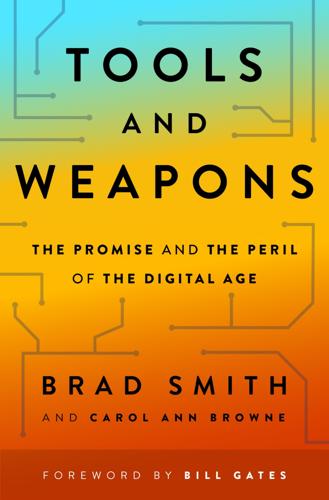
Tools and Weapons: The Promise and the Peril of the Digital Age
by
Brad Smith
and
Carol Ann Browne
Published 9 Sep 2019
Julia Angwin, Jeff Larson, Surya Mattu, and Lauren Kirchner, “Machine Bias,” ProPublica, May 23, 2016, https://www.propublica.org/article/machine-bias-risk-assessments-in-criminal-sentencing. Back to note reference 13. The article led to a lively debate about the definition of bias and how to assess the risk of it in AI algorithms. See Matthias Spielkamp, “Inspecting Algorithms for Bias,” MIT Technology Review, June 12, 2017, https://www.technologyreview.com/s/607955/inspecting-algorithms-for-bias/. Back to note reference 14. Joy Buolamwini, “Gender Shades,” Civic Media, MIT Media Lab, accessed November 15, 2018, https://www.media.mit.edu/projects/gender-shades/overview/. Back to note reference 15. Thomas G.

Architects of Intelligence
by
Martin Ford
Published 16 Nov 2018
One threat that is already becoming evident is the vulnerability of interconnected, autonomous systems to cyber attack or hacking. As AI becomes ever more integrated into our economy and society, solving this problem will be one of the most critical challenges we face. Another immediate concern is the susceptibility of machine learning algorithms to bias, in some cases on the basis of race or gender. Many of the individuals I spoke with emphasized the importance of addressing this issue and told of research currently underway in this area. Several also sounded an optimistic note—suggesting that AI may someday prove to be a powerful tool to help combat systemic bias or discrimination.
…
That now said, I agree with you that bias and diversity can be treated a little more separately. For example, in terms of data bias resulting in machine learning outcome bias, a lot of academia researchers are recognizing this now, and working on ways to expose that kind of bias. They’re also modifying algorithms to respond to bias in a way to try to correct it that way. This exposure to the bias of products and technology, from academia to industry, is really healthy, and it keeps the industry on their toes. MARTIN FORD: You must have to deal with machine learning bias at Google. How do you address it? FEI-FEI LI: Google now has a whole group of researchers working on machine learning bias and “explainability” because the pressure is there to tackle bias, to deliver a better product, and we want to be helping others.
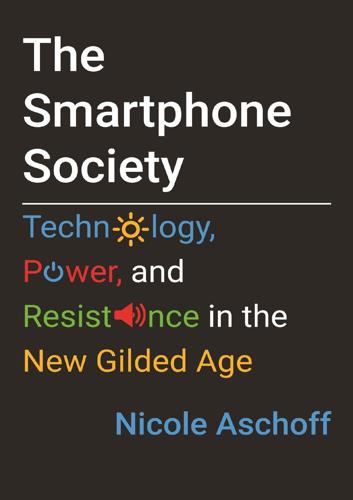
The Smartphone Society
by
Nicole Aschoff
Data & Society is a nonprofit research institute “focused on the social and cultural issues arising from data-centric technological development.” For more, see Caplan et al., “Algorithmic Accountability: A Primer,” prepared for the Congressional Progressive Caucus, Tech Algorithm Briefing, “How Algorithms Perpetuate Racial Bias and Inequality,” Data & Society, April 18, 2018. 21. Diakopoulos and Friedler, “How to Hold Algorithms Accountable.” 22. The term “Green New Deal” has been around for more than a decade, but its recent usage refers to a pair of resolutions submitted to Congress by Representative Alexandria Ocasio-Cortez and Senator Ed Markey and to the broader social movement supporting the ideas articulated in the proposals.
…
American Civil Liberties Union, May 22, 2018. Cahill, Damien, and Martijn Konings. Neoliberalism. Medford, MA: Polity Press, 2017. Caplan, Robyn, et al. “Algorithmic Accountability: A Primer.” Report originally prepared for the Congressional Progressive Caucus’s Tech Algorithm Briefing: How Algorithms Perpetuate Racial Bias and Inequality. Data & Society, April 18, 2018. Caron, André H., and Letizia Caronia. Moving Cultures: Mobile Communication in Everyday Life. Montreal: McGill-Queen’s University Press, 2007. Carr, Nicholas. “How Smartphones Hijack Our Minds.” Wall Street Journal, October 6, 2017. ———.

Coders: The Making of a New Tribe and the Remaking of the World
by
Clive Thompson
Published 26 Mar 2019
Index Aaron Swartz hackathon, ref1 Abbate, Janet, ref1, ref2, ref3, ref4 Abene, Mark, ref1 Abma, Jobert, ref1 Adams, John, ref1 Addiction by Design (Schüll), ref1 addictive behavior, as side effect of optimization, ref1 Adler, Mortimer J., ref1 Adobe, ref1 advertising, ref1, ref2 African American coders. See minority coders agile development, ref1 AI. See artificial intelligence (AI) Albright, Jonathan, ref1 Alciné, Jacky, ref1 algorithms, ref1, ref2 bias in ranking systems, ref1 scale and, ref1 algorithms challenge whiteboard interview, ref1, ref2, ref3 Algorithms of Oppression (Noble), ref1 Allen, Fran, ref1, ref2 Allen, Paul, ref1 AlphaGo, ref1, ref2 Altman, Sam, ref1, ref2 Amabile, Teresa M., ref1 Amazon, ref1, ref2, ref3 Amazons (board game), ref1 Amazon Web Services, ref1 Analytical Engine, ref1 Anderson, Tom, ref1 AND gate, ref1 Andreessen, Marc, ref1, ref2, ref3, ref4, ref5, ref6, ref7, ref8 Antisocial Media (Vaidhyanathan), ref1 Apple, ref1 Apple I, ref1 Apple iPhone, ref1, ref2 aptitude testing, ref1 architects, ref1 artificial intelligence (AI), ref1 dangers of, warnings about and debate over, ref1 de-biasing of, ref1 deep learning (See deep learning) edge cases and, ref1 expert systems, ref1 Hollywood depiction of, ref1 initial attempts to create, at Dartmouth in 1956, ref1 job listing sites, biased results in, ref1 justice system, effect of AI bias on, ref1 learning problem, ref1 neural nets (See neural nets) racism and sexism, learning of, ref1 artistic temperaments, ref1 Assembly computer language, ref1 Atwood, Jeff, ref1, ref2 Babbage, Charles, ref1, ref2 back-end code, ref1, ref2, ref3, ref4 backpropagation, ref1 “Bad Smells in Code” (Fowler and Beck), ref1 Baffler, The, ref1 Bahnken, A.

Extremely Hardcore: Inside Elon Musk's Twitter
by
Zoë Schiffer
Published 13 Feb 2024

Invisible Women
by
Caroline Criado Perez
Published 12 Mar 2019
But if you aren’t aware of how those biases operate, if you aren’t collecting data and taking a little time to produce evidence-based processes, you will continue to blindly perpetuate old injustices. And so by not considering the ways in which women’s lives differ from men’s, both on and offline, Gild’s coders inadvertently created an algorithm with a hidden bias against women. But that’s not even the most troubling bit. The most troubling bit is that we have no idea how bad the problem actually is. Most algorithms of this kind are kept secret and protected as proprietary code. This means that we don’t know how these decisions are being made and what biases they are hiding.
…
The authors of the women = homemaker paper devised a new algorithm that reduced gender stereotyping (e.g. ‘he is to doctor as she is to nurse’) by over two-thirds, while leaving gender-appropriate word associations (e.g. ‘he is to prostate cancer as she is to ovarian cancer’) intact.49 And the authors of the 2017 study on image interpretation devised a new algorithm that decreased bias amplification by 47.5%. CHAPTER 9 A Sea of Dudes When Janica Alvarez was trying to raise funds for her tech start-up Naya Health Inc. in 2013, she struggled to get investors to take her seriously. In one meeting, ‘investors Googled the product and ended up on a porn site. They lingered on the page and started cracking jokes’, leaving Alvarez feeling like she was ‘in the middle of a fraternity’.1 Other investors were ‘too grossed out to touch her product or pleaded ignorance’, with one male investor saying ‘I’m not touching that; that’s disgusting.’2 And what was this vile, ‘disgusting’ and incomprehensible product Alvarez was pitching?

Robot Rules: Regulating Artificial Intelligence
by
Jacob Turner
Published 29 Oct 2018
– You are not permitted to modify any robot to enable it to function as a weapon.103 It remains to be seen though whether and to what extent the European Parliament’s ambitious proposals will be adopted in legislative proposals by the Commission. 4.8 Japanese Initiatives A June 2016 Report issued by Japan’s Ministry of Internal Affairs and Communications proposed nine principles for developers of AI, which were submitted for international discussion at the G7104 and OECD:1) Principle of collaboration—Developers should pay attention to the interconnectivity and interoperability of AI systems. 2) Principle of transparency —Developers should pay attention to the verifiability of inputs/outputs of AI systems and the explainability of their judgments. 3) Principle of controllability—Developers should pay attention to the controllability of AI systems. 4) Principle of safety—Developers should take it into consideration that AI systems will not harm the life, body, or property of users or third parties through actuators or other devices. 5) Principle of security—Developers should pay attention to the security of AI systems. 6) Principle of privacy—Developers should take it into consideration that AI systems will not infringe the privacy of users or third parties. 7) Principle of ethics—Developers should respect human dignity and individual autonomy in R&D of AI systems. 8) Principle of user assistance—Developers should take it into consideration that AI systems will support users and make it possible to give them opportunities for choice in appropriate manners. 9) Principle of accountability—Developers should make efforts to fulfill their accountability to stakeholders including users of AI systems.105 Japan emphasised that the above principles were intended to be treated as soft law, but with a view to “accelerate the participation of multistakeholders involved in R&D and utilization of AI… at both national and international levels, in the discussions towards establishing ‘AI R&D Guidelines’ and ‘AI Utilization Guidelines’”.106 Non-governmental groups in Japan have also been active: the Japanese Society for Artificial Intelligence proposed Ethical Guidelines for an Artificial Intelligence Society in February 2017, aimed at its members.107 Fumio Shimpo, a member of the Japanese Government’s Cabinet Office Advisory Board, has proposed his own Eight Principles of the Laws of Robots.108 4.9 Chinese Initiatives In furtherance of China’s Next Generation Artificial Intelligence Development Plan,109 and as mentioned in Chapter 6, in January 2018 a division of China’s Ministry of Industry and Information Technology released a 98-page White Paper on AI Standardization (the White Paper), the contents of which comprise China’s most comprehensive analysis to date of the ethical challenges raised by AI.110 The White Paper highlights emergent ethical issues in AI including privacy,111 the Trolley Problem,112 algorithmic bias,113 transparency 114 and liability for harm caused by AI.115 In terms of AI safety, the White Paper explains that:Because the achieved goals of artificial intelligence technology are influenced by its initial settings, the goal of artificial intelligence design must be to ensure that the design goals of artificial intelligence are consistent with the interests and ethics of most human beings.

Digital Empires: The Global Battle to Regulate Technology
by
Anu Bradford
Published 25 Sep 2023
It can be contrasted with the 2017 Google Shopping decision,128 which failed to produce a Brussels Effect. In that case, Google was found to have violated EU antitrust rules by giving preference to Google’s own shopping service over other similar online comparison-shopping platforms. The Commission fined Google and ordered the company to remove any algorithmic bias that favored its own platform—a decision that was upheld in 2021 by the EU’s General Court.129 To comply with the decision, Google established a separate business unit to operate Google Shopping in the EU, confining its compliance only to the EU market.130 With the help of geolocation techniques, Google managed to ringfence its European shopping business and ensure that the users who access Google sites using a non-European IP address will continue to be governed by its previous business model for Google shopping.131 Although dividing its operations across different markets this way can be appealing for the tech company in that it allows it to evade the Brussels Effect, this option is not always available either for economic, technological, or reputational reasons.
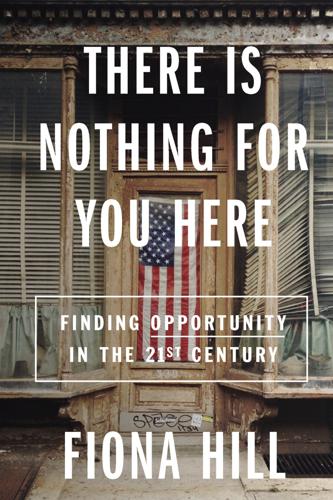
There Is Nothing for You Here: Finding Opportunity in the Twenty-First Century
by
Fiona Hill
Published 4 Oct 2021
Sometimes, moreover, they find that the deck is stacked against them even when they perform exceptionally well, as low-income A-level students discovered during the UK algorithm debacle in summer 2020. Interventions in elementary and secondary education are critical in expanding the infrastructure of opportunity, but national government programs frequently miss the mark, and not only when it comes to processes such as testing and issues such as algorithmic bias. Schools in both the UK and the United States get only a fraction of their funding from the central government. K-12 institutions are dependent on local government budgets and local income tax revenues. Unlike universities, which can tap into a mix of government funding, tuition fees, private endowments, and corporate sponsorship, schools outside the private educational sphere are dependent on their immediate ecosystem.
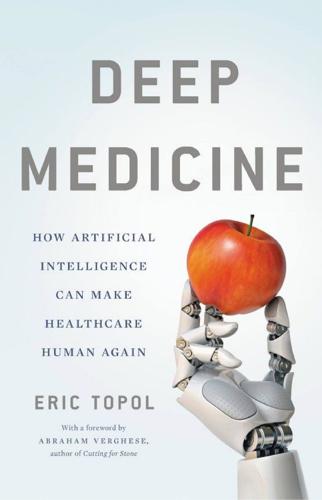
Deep Medicine: How Artificial Intelligence Can Make Healthcare Human Again
by
Eric Topol
Published 1 Jan 2019
Vanian, J., “Unmasking A.I.’s Bias Problem,” Fortune. 2018; Courtland, R., “Bias Detectives: The Researchers Striving to Make Algorithms Fair,” Nature. 2018. 37. Simonite, T., “Using Artificial Intelligence to Fix Wikipedia’s Gender Problem,” Wired. 2018. 38. Miller, A. P., “Want Less-Biased Decisions? Use Algorithms,” Harvard Business Review. 2018; Thomas, R., “What HBR Gets Wrong About Algorithms and Bias,” Fast AI. 2018. 39. Adamson, A. S., and A. Smith, “Machine Learning and Health Care Disparities in Dermatology.” JAMA Dermatol, 2018. 40. Harari, Y. N., Homo Deus. 2016. New York: HarperCollins, p. 348. 41. Lee, K. F., “The Real Threat of Artificial Intelligence,” New York Times. 2017. 42.
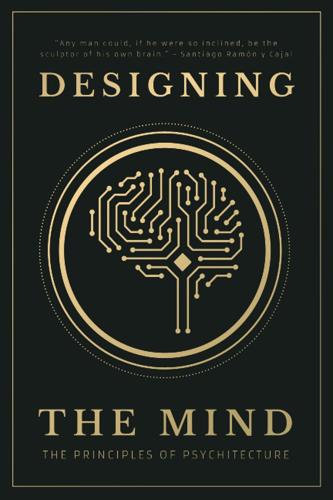
Designing the Mind: The Principles of Psychitecture
by
Designing The Mind
and
Ryan A Bush
Published 10 Jan 2021
Under normal circumstances, the planning fallacy would be activated: You would consult your intuitions and output the conclusion “one week from now.” We’ll call this mode of reasoning the “inside view.” But if you have sufficient metacognitive awareness and familiarity with this bias, you will have the opportunity to step in, design a counter-algorithm, and rewire the bias, which we call cognitive revision. Daniel Kahneman, a psychologist and pioneer in cognitive bias research, suggests a workaround for this particular bias: Using such distributional information from other ventures similar to that being forecasted is called taking an 'outside view' and is the cure to the planning fallacy
…
Watts adds: The whole process of nature is an integrated process of immense complexity, and it’s really impossible to tell whether anything that happens in it is good or bad — because you never know what will be the consequence of the misfortune; or, you never know what will be the consequences of good fortune. The psychological study of affective forecasting shows that we not only oversimplify the world, but our prediction of our own emotional state. Daniel Gilbert, a leading psychologist studying affective forecasting, discovered that humans share an algorithm he called impact bias, which causes us to poorly forecast how we will feel about a certain event or decision, how intense that feeling will be, and how long it will last. In other words, our internal emotion-simulator is just as flawed as our life-simulator.4 In his book, Stumbling on Happiness, Gilbert names several principles behind our shortcomings.

Power and Progress: Our Thousand-Year Struggle Over Technology and Prosperity
by
Daron Acemoglu
and
Simon Johnson
Published 15 May 2023
Slave Life in Georgia: A Narrative of the Life, Sufferings, and Escape of John Brown, a Fugitive Slave, Now in England. Edited by Louis Alexis Chamerovzow. https://docsouth.unc.edu/neh/jbrown/jbrown.html. Brown, Megan A., James Bisbee, Angela Lai, Richard Bonneau, Jonathan Nagler, and Joshua A. Tucker. 2022. “Echo Chambers, Rabbit Holes, and Algorithmic Bias: How YouTube Recommends Content to Real Users.” May 25. https://ssrn.com/abstract=4114905. Brundage, Vernon Jr. 2017. “Profile of the Labor Force by Educational Attainment.” US Bureau of Labor Statistics, Spotlight on Statistics, www.bls.gov/spotlight/2017/educational-attainment-of-the-labor-force.

The Industries of the Future
by
Alec Ross
Published 2 Feb 2016
Because big data often relies on historical data or at least the status quo, it can easily reproduce discrimination against disadvantaged racial and ethnic minorities. The propensity models used in many algorithms can bake in a bias against someone who lived in the zip code of a low-income neighborhood at any point in his or her life. If an algorithm used by human resources companies queries your social graph and positively weighs candidates with the most existing connections to a workforce, it makes it more difficult to break in in the first place. In effect, these algorithms can hide bias behind a curtain of code. Big data is, by its nature, soulless and uncreative. It nudges us this way and that for reasons we are not meant to understand.

What Algorithms Want: Imagination in the Age of Computing
by
Ed Finn
Published 10 Mar 2017
The apparent transparency and simplicity of computational systems are leading many to see them as vehicles for unbiased decision-making. Companies like UpStart and ZestFinance view computation as a way to judge financial reliability and make loans to people who fail more traditional algorithmic tests of credit-worthiness, like credit scores.14 These systems essentially deploy algorithms to counter the bias of other algorithms, or more cynically to identify business opportunities missed by others. The companies behind these systems are relatively unusual, however, in acknowledging the ideological framing of their business plans, and explicitly addressing how their systems attempt to judge “character.”

New Laws of Robotics: Defending Human Expertise in the Age of AI
by
Frank Pasquale
Published 14 May 2020
Mike Butcher, “The Robot-Recruiter Is Coming—VCV’s AI Will Read Your Face in a Job Interview,” TechCrunch, April 23, 2019, https://techcrunch.com/2019/04/23/the-robot-recruiter-is-coming-vcvs-ai-will-read-your-face-in-a-job-interview/. 2. Miranda Bogen and Aaron Rieke, Help Wanted: An Examination of Hiring Algorithms, Equity, and Bias (Washington, DC: Upturn, 2018), https://www.upturn.org/static/reports/2018/hiring-algorithms/files/Upturn%20—%20Help%20Wanted%20-%20An%20Exploration%20of%20Hiring%20Algorithms,%20Equity%20and%20Bias.pdf. 3. There are numerous examples of person-judging technology reinscribing and reinforcing old forms of unearned privilege and unfair disadvantage.

The Measure of Progress: Counting What Really Matters
by
Diane Coyle
Published 15 Apr 2025
I n de x Note: Numbers in italics denote tables. accounting frameworks: based on time use, 7–8, 143, 256–58; failures of, 32–33; KLEMS, 11, 43–46, 55; for new goods and quality change, 188–90. See also individual frameworks advance market commitments, 142 advertising, digital, 127–28 Airbnb, 93, 149, 151 algorithms: data bias and, 29–30; fairness issues regarding, 30–31 Always On (Cellan-Jones), 103 Amazon, 87, 95, 166, 166, 168, 171, 175 Amazon Web Services (AWS), 88–89, 91, 92, 167, 170, 196 Apple, 73, 85, 87, 112, 157, 171 Apple iPhone, 102, 102–3, 155 as-a-service model, 248. See also subscription economy Assetization (Birch & Muniesa), 220 assets: classifying, 212–15; comprehensive wealth framework and types of, 7, 248–49; defining, 7, 215; in social infrastructure, 61 As Time Goes By (Freeman & Louca), 258 attention economy, 122–23 Attention Economy, The (Davenport & Beck), 122 “attention rents,” 134 barter, imputation for, 131–33 Baumol cost disease, 64 Beyond GDP movement, 16, 179, 233, 238, 240–41, 244–45, 263 Big Tech: dominance of, 171–72; labour sources, 163–64; personal data collected by, 145–46; using revenues to estimate digitally delivered services, advertising, and platform fees, 169 biodiversity, decline in, 206–7 bonding and bridging, social capital and, 232 budget constraint applied to digital services, 139 bundling solutions/services, 72–73, 74, 88, 116 Cantril’s ladder of life, 234, 241 capabilities, comprehensive wealth framework and, 243, 250–51 capital: domestic, 119–20; household, 113–16; public, 60–65; substituted for labour, 100–1.

Radical Technologies: The Design of Everyday Life
by
Adam Greenfield
Published 29 May 2017
It will therefore have problems with accurate identification when presented with a black Camaro. Or it could suffer from the opposite problem, bias. In the context of machine learning, bias means that even after extensive training, an algorithm has failed to acquire anything essential at all about the set of target objects it’s being asked to identify. An algorithm displaying high bias is basically taking random stabs in the dark, however much confidence it may seem to be mustering in its labeling, and will without hesitation identify outright static as a house, a whale or a chair. (We should be careful to distinguish this sense of the word from its more usual, pejorative sense, in which the implicit prejudices of the party responsible for training an algorithm are reflected in its output—though that happens too, as on the notorious occasion on which a Google Images algorithm identified a picture of black people as “gorillas,” apparently because the only training images labeled “people” it had ever been provided had light skin.)6 However they might undermine an algorithm’s practical utility, or embarrass the software developers involved, errors of bias and overfitting can be corrected.

Artificial Intelligence: A Modern Approach
by
Stuart Russell
and
Peter Norvig
Published 14 Jul 2019
(Machine learning papers in arXiv.org doubled every year from 2009 to 2017.) Computer vision and natural language processing were the next most popular. •Sentiment: About 70% of news articles on AI are neutral, but articles with positive tone increased from 12% in 2016 to 30% in 2018. The most common issues are ethical: data privacy and algorithm bias. •Students: Course enrollment increased 5-fold in the U.S. and 16-fold internationally from a 2010 baseline. AI is the most popular specialization in Computer Science. •Diversity: AI Professors worldwide are about 80% male, 20% female. Similar numbers hold for Ph.D. students and industry hires.
…
C., Houde, S., Kannan, K., Lohia, P., Martino, J., Mehta, S., Mojsilovic, A., Nagar, S., Ramamurthy, K. N., Richards, J. T., Saha, D., Sattigeri, P., Singh, M., Varshney, K. R., and Zhang, Y. (2018). AI fairness 360: An extensible toolkit for detecting, understanding, and mitigating unwanted algorithmic bias. arXiv:1810.01943. Bellemare, M. G., Naddaf, Y., Veness, J., and Bowling, M. (2013). The arcade learning environment: An evaluation platform for general agents. JAIR, 47, 253–279. Bellman, R. E. (1952). On the theory of dynamic programming. PNAS, 38, 716–719. Bellman, R. E. (1958). On a routing problem.

Why Machines Learn: The Elegant Math Behind Modern AI
by
Anil Ananthaswamy
Published 15 Jul 2024
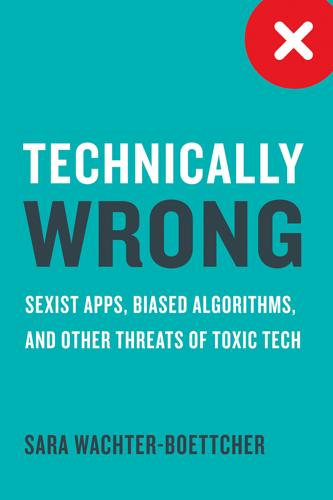
Technically Wrong: Sexist Apps, Biased Algorithms, and Other Threats of Toxic Tech
by
Sara Wachter-Boettcher
Published 9 Oct 2017
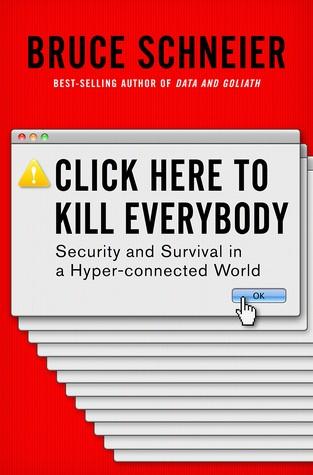
Click Here to Kill Everybody: Security and Survival in a Hyper-Connected World
by
Bruce Schneier
Published 3 Sep 2018

Calling Bullshit: The Art of Scepticism in a Data-Driven World
by
Jevin D. West
and
Carl T. Bergstrom
Published 3 Aug 2020
Sky News. July 4, 2019. McCool, John H. “Opinion: Why I Published in a Predatory Journal.” The Scientist. April 6, 2017. Merton, R. K. “Priorities in Scientific Discovery: A Chapter in the Sociology of Science.” American Sociological Review 22 (1957): 635–59. “Mortgage Algorithms Perpetuate Racial Bias in Lending, Study Finds.” Press release. University of California, Berkeley. November 13, 2018. “NASA Twins Study Confirms Preliminary Findings.” Press release. National Aeronautics and Space Administration. January 31, 2018. https://www.nasa.gov/feature/nasa-twins-study-confirms-preliminary-findings.
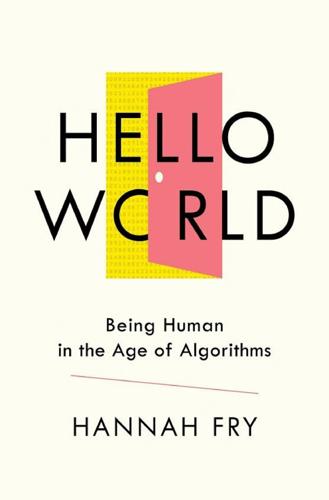
Hello World: Being Human in the Age of Algorithms
by
Hannah Fry
Published 17 Sep 2018
(TV show) 97–9 John Carter (film) 180 Johnson, Richard 50, 51 Jones Beach 1 Jones, Robert 13–14 judges anchoring effect 73 bail, factors for consideration 73 decision-making consistency in 51 contradictions in 52–3 differences in 52 discretion in 53 unbiased 77 judges (continued) discrimination and bias 70–1, 75 intuition and considered thought 72 lawyers’ preference over algorithms 76–7 vs machines 59–61 offenders’ preference over algorithms 76 perpetuation of bias 73 sentencing 53–4, 63 use of algorithms 63, 64 Weber’s Law 74–5 Jukebox 192 junk algorithms 200 Just Noticeable Difference 74 justice 49–78 algorithms and 54–6 justification for 77 appeals process 51 Brixton riots 49–51 by country Australia 53 Canada 54 England 54 Ireland 54 Scotland 54 United States 53, 54 Wales 54 discretion of judges 53 discrimination 70–1 humans vs machines 59–61, 62–4 hypothetical cases (UK research) 52–3 defendants appearing twice 52–3 differences in judgement 52, 53 hypothetical cases (US research) 51–2 differences in judgements 52 differences in sentencing 52 inherent injustice 77 machine bias 65–71 maximum terms 54 purpose of 77–8 re-offending 54, 55 reasonable doubt 51 rehabilitation 55 risk-assessment algorithms 56 sentencing consistency in 51 mitigating factors in 53 substantial grounds 51 Kadoodle 15–16 Kahneman, Daniel 72 Kanevsky, Dr Jonathan 93, 95 kangaroos 128 Kant, Immanuel 185 Kasparov, Gary 5-7, 202 Kelly, Frank 87 Kerner, Winifred 188–9 Kernighan, Brian x Killingbeck 145, 146 Larson, Steve 188–9 lasers 119–20 Leibniz, Gottfried 184 Leroi, Armand 186, 192–3 level 0 (driverless technology) 131 level 1 (driverless technology) 131 level 2 (driverless technology) 131, 136 careful attention 134–5 level 3 (driverless technology) 131 technical challenge 136 level 4 (driverless technology) 131 level 5 (driverless technology) 131 Li Yingyun 45 Lickel, Charles 97–8 LiDAR (Light Detection and Ranging) 119–20 life insurance 109 ‘Lockdown’ (52Metro) 177 logic 8 logical instructions 8 London Bridge 172 London School of Economics (LSE) 129 Loomis, Eric 217n38 Los Angeles Police Department 152, 155 Lucas, Teghan 161–2, 163 machine-learning algorithms 10–11 neural networks 85–6 random forests 58–9 machines art and 194 bias in 65–71 diagnostic 98–101, 110–11 domination of humans 5-6 vs humans 59–61, 62–4 paradoxical relationship with 22–3 recognising images 84–7 superior judgement of 16 symbolic dominance over humans 5-6 Magic Test 199 magical illusions 18 mammogram screenings 94, 96 manipulation 39–44 micro-manipulation 42–4 Maple, Jack 147–50 Marx, Gary 173 mastectomies 83, 84, 92, 94 maternity wards, deaths on 81 mathematical certainty 68 mathematical objects 8 McGrayne, Sharon Bertsch 122 mechanized weaving machines 2 Medicaid assistance 16–17 medical conditions, algorithms for 96–7 medical records 102–7 benefits of algorithms 106 DeepMind 104–5 disconnected 102–3 misuse of data 106 privacy 105–7 medicine 79–112 in ancient times 80 cancer diagnoses study 79–80 complexity of 103–4 diabetic retinopathy 96 diagnostic machines 98–101, 110–11 choosing between individuals and the population 111 in fifteenth-century China 81 Hippocrates and 80 magic and 80 medical records 102–6 neural networks 85–6, 95, 96, 219–20n11 in nineteenth-century Europe 81 pathology 79, 82–3 patterns in data 79–81 predicting dementia 90–2 scientific base 80 see also Watson (IBM computer) Meehl, Paul 21–2 MegaFace challenge 168–9 Mercedes 125–6 microprocessors x Millgarth 145, 146 Mills, Tamara 101–2, 103 MIT Technology Review 101 modern inventions 2 Moses, Robert 1 movies see films music 176–80 choosing 176–8 diversity of charts 186 emotion and 189 genetic algorithms 191–2 hip hop 186 piano experiment 188–90 algorithm 188, 189–91 popularity 177, 178 quality 179, 180 terrible, success of 178–9 Music Lab 176–7, 179, 180 Musk, Elon 138 MyHeritage 110 National Geographic Genographic project 110 National Highway Traffic Safety Administration 135 Navlab 117 Netflix 8, 188 random forests 59 neural networks 85–6, 95, 119, 201, 219–20n11 driverless cars 117–18 in facial recognition 166–7 predicting performances of films 183 New England Journal of Medicine 94 New York City subway crime 147–50 anti-social behaviour 149 fare evasion 149 hotspots 148, 149 New York Police Department (NYPD) 172 New York Times 116 Newman, Paul 127–8, 130 NHS (National Health Service) computer virus in hospitals 105 data security record 105 fax machines 103 linking of healthcare records 102–3 paper records 103 prioritization of non-smokers for operations 106 nuclear war 18–19 Nun Study 90–2 obesity 106 OK Cupid 9 Ontario 169–70 openworm project 13 Operation Lynx 145–7 fingerprints 145 overruling algorithms correctly 19–20 incorrectly 20–1 Oxbotica 127 Palantir Technologies 31 Paris Auto Show (2016) 124–5 parole 54–5 Burgess’s forecasting power 55–6 violation of 55–6 passport officers 161, 164 PathAI 82 pathologists 82 vs algorithms 88 breast cancer research on corpses 92–3 correct diagnoses 83 differences of opinion 83–4 diagnosing cancerous tumours 90 sensitivity and 88 specificity and 88 pathology 79, 82 and biology 82–3 patterns in data 79–81, 103, 108 payday lenders 35 personality traits 39 advertising and 40–1 inferred by algorithm 40 research on 39–40 Petrov, Stanislav 18–19 piano experiment 188–90 pigeons 79–80 Pomerleau, Dean 118–19 popularity 177, 178, 179, 183–4 power 5–24 blind faith in algorithms 13–16 overruling algorithms 19–21 struggle between humans and algorithms 20–4 trusting algorithms 16–19 power of veto 19 Pratt, Gill 137 precision in justice 53 prediction accuracy of 66, 67, 68 algorithms vs humans 22, 59–61, 62–5 Burgess 55–6 of crime burglary 150–1 HunchLab algorithm 157–8 PredPol algorithm 152–7, 158 risk factor 152 Strategic Subject List algorithm 158 decision trees 56–8 dementia 90–2 prediction (continued) development of abnormalities 87, 95 homicide 62 of personality 39–42 of popularity 177, 178, 179, 180, 183–4 powers of 92–6 of pregnancy 29–30 re-offending criminals 55–6 recidivism 62, 63–4, 65 of successful films 180–1, 182–3, 183 superiority of algorithms 22 see also Clinical vs Statistical Prediction (Meehl); neural networks predictive text 190–1 PredPol (PREDictive POLicing) 152–7, 158, 228–9n27 assessing locations at risk 153–4 cops on the dots 155–6 fall in crime 156 feedback loop 156–7 vs humans, test 153–4 target hardening 154–5 pregnancy prediction 29–30 prescriptive sentencing systems 53, 54 prioritization algorithms 8 prisons cost of incarceration 61 Illinois 55, 56 reduction in population 61 privacy 170, 172 false sense of 47 issues 25 medical records 105–7 overriding of 107 sale of data 36–9 probabilistic inference 124, 127 probability 8 ProPublica 65–8, 70 quality 179, 180 ‘good’ changing nature of 184 defining 184 quantifying 184–8 difficulty of 184 Washington Post experiment 185–6 racial groups COMPAS algorithm 65–6 rates of arrest 68 radar 119–20 RAND Corporation 158 random forests technique 56–9 rape 141, 142 re-offending 54 prediction of 55–6 social types of inmates 55, 56 recidivism 56, 62, 201 rates 61 risk scores 63–4, 65 regulation of algorithms 173 rehabilitation 55 relationships 9 Republican voters 41 Rhode Island 61 Rio de Janeiro–Galeão International Airport 132 risk scores 63–4, 65 Robinson, Nicholas 49, 50, 50–1, 77 imprisonment 51 Rossmo, Kim 142–3 algorithm 145–7 assessment of 146 bomb factories 147 buffer zone 144 distance decay 144 flexibility of 146 stagnant water pools 146–7 Operation Lynx 145–7 Rotten Tomatoes website 181 Royal Free NHS Trust 222–3n48 contract with DeepMind 104–5 access to full medical histories 104–5 outrage at 104 Rubin’s vase 211n13 rule-based algorithms 10, 11, 85 Rutherford, Adam 110 Safari browser 47 Sainsbury’s 27 Salganik, Matthew 176–7, 178 Schmidt, Eric 28 School Sisters of Notre Dame 90, 91 Science magazine 15 Scunthorpe 2 search engines 14–15 experiment 14–15 Kadoodle 15–16 Semmelweis, Ignaz 81 sensitivity, principle of 87, 87–8 sensors 120 sentencing algorithms for 62–4 COMPAS 63, 64 considerations for 62–3 consistency in 51 length of 62–3 influencing 73 Weber’s Law 74–5 mitigating factors in 53 prescriptive systems 53, 54 serial offenders 144, 145 serial rapists 141–2 Sesame Credit 45–6, 168 sexual attacks 141–2 shoplifters 170 shopping habits 28, 29, 31 similarity 187 Slash X (bar) 113, 114, 115 smallpox inoculation 81 Snowden, David 90–2 social proof 177–8, 179 Sorensen, Alan 178 Soviet Union detection of enemy missiles 18 protecting air space 18 retaliatory action 19 specificity, principle of 87, 87–8 speech recognition algorithms 9 Spotify 176, 188 Spotify Discover 188 Sreenivasan, Sameet 181–2 Stammer, Neil 172 Standford University 39–40 STAT website 100 statistics 143 computational 12 modern 107 NYPD 172 Stilgoe, Jack 128–9, 130 Strategic Subject List 158 subway crime see New York City subway crime supermarkets 26–8 superstores 28–31 Supreme Court of Wisconsin 64, 217n38 swine flu 101–2 Talley, Steve 159, 162, 163–4, 171, 230n47 Target 28–31 analysing unusual data patterns 28–9 expectant mothers 28–9 algorithm 29, 30 coupons 29 justification of policy 30 teenage pregnancy incident 29–30 target hardening 154–5 teenage pregnancy 29–30 Tencent YouTu Lab algorithm 169 Tesco 26–8 Clubcard 26, 27 customers buying behaviour 26–7 knowledge about 27 loyalty of 26 vouchers 27 online shopping 27–8 ‘My Favourites’ feature 27–8 removal of revealing items 28 Tesla 134, 135 autopilot system 138 full autonomy 138 full self-driving hardware 138 Thiel, Peter 31 thinking, ways of 72 Timberlake, Justin 175–6 Timberlake, Justin (artist) 175–6 Tolstoy, Leo 194 TomTom sat-nav 13–14 Toyota 137, 210n13 chauffeur mode 139 guardian mode 139 trolley problem 125–6 true positives 67 Trump election campaign 41, 44 trust 17–18 tumours 90, 93–4 Twain, Mark 193 Twitter 36, 37, 40 filtering 10 Uber driverless cars 135 human intervention 135 uberPOOL 10 United Kingdom (UK) database of facial images 168 facial recognition algorithms 161 genetic tests for Huntington’s disease 110 United States of America (USA) database of facial images 168 facial recognition algorithms 161 life insurance stipulations 109 linking of healthcare records 103 University of California 152 University of Cambridge research on personality traits 39–40 and advertising 40–1 algorithm 40 personality predictions 40 and Twitter 40 University of Oregon 188–90 University of Texas M.

Rebel Ideas: The Power of Diverse Thinking
by
Matthew Syed
Published 9 Sep 2019
But if you aren’t aware of how those biases operate, if you aren’t collecting data and taking a little time to produce evidence-based processes, you will continue to blindly perpetuate old injustices. And so by not considering ways in which women’s lives differ from men’s, both on and offline, Gild’s coders inadvertently created an algorithm with a hidden bias against women.’ 6 https://hbr.org/2019/06/why-you-should-create-a-shadow-board-of-younger-employees 7 https://www.npr.org/2015/09/14/440215976/journalist-says-the-drone-strike-that-killed-awlaki-did-not-silence-him Footnotes 1 Collective Blindness FN1 This was partly about the fear that gay staff, particularly those who had not come out, might be subject to blackmail.

Futureproof: 9 Rules for Humans in the Age of Automation
by
Kevin Roose
Published 9 Mar 2021

The Strange Order of Things: The Biological Roots of Culture
by
Antonio Damasio
Published 6 Feb 2018
On the other hand, the public generally lacks the time and the method to convert massive amounts of information into sensible and practically usable conclusions. Moreover, the companies that manage the distribution and aggregation of the information assist the public in a dubious way: the flow of information is directed by company algorithms that, in turn, bias the presentation so as to suit a variety of financial, political, and social interests, not to mention the tastes of users so that they can continue within their own entertaining silo of opinions. One should acknowledge, in fairness, that the voices of wisdom from the past—the voices of experienced and thoughtful editors of newspapers and radio and television programs—were also biased and favored particular views of how societies should function.
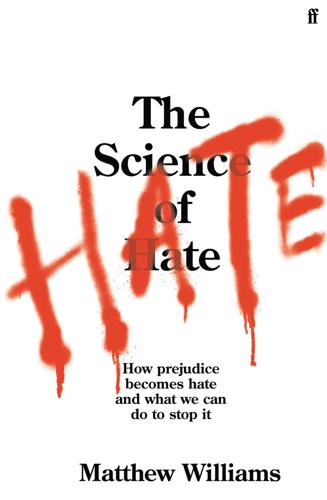
The Science of Hate: How Prejudice Becomes Hate and What We Can Do to Stop It
by
Matthew Williams
Published 23 Mar 2021

Silicon City: San Francisco in the Long Shadow of the Valley
by
Cary McClelland
Published 8 Oct 2018
Simultaneously, if this is not your discipline—and I’m not just saying, “Are you a person of color? Are you a woman?”—if this is not your discipline, you can be helpful, but you cannot lead this conversation. Because we will tell you, you cannot program your way out of this problem. There is no algorithm that will solve this. Bias continues to be embedded in the code. Many of the solutions that will bring about racial-social justice, put an end to police violence, do those kinds of things—need to have, at their root, technology. Technology, to scale. Technology, for accessibility. Technology, for low-cost solutions and low barriers to entry.
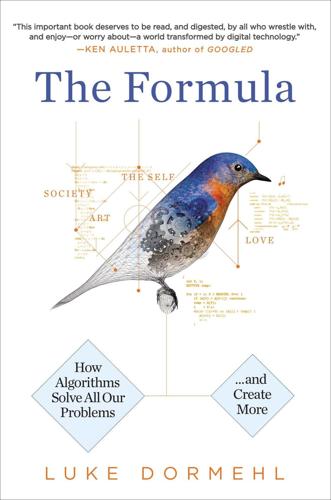
The Formula: How Algorithms Solve All Our Problems-And Create More
by
Luke Dormehl
Published 4 Nov 2014
While Berk’s comments are designed to get actionable information to predict future criminality, one could argue that by black-boxing the inner workings of the technology, something similar has taken place with the underlying social dynamics. In other areas—particularly as relate to law—a reliance on algorithms might simply justify existing bias and lack of understanding, in the same way that the “filter bubble” effect described in Chapter 1 can result in some people not being presented with certain pieces of information, which may take the form of opportunities. “It’s not just you and I who don’t understand how these algorithms work—the engineers themselves don’t understand them entirely,” says scholar Ted Striphas.

The Deep Learning Revolution (The MIT Press)
by
Terrence J. Sejnowski
Published 27 Sep 2018
Cowan, Manhattan Project to the Santa Fe Institute: The Memoirs of George A. Cowan (Albuquerque: University of New Mexico Press, 2010). 4. Google’s PageRank algorithm, which was invented by Google founders Larry Page and Sergey Brin, uses links to a webpage to rank the importance of pages on the Internet. It has since been elaborated with many layers of algorithms to manipulate the bias on searches. 5. A. D. I. Kramer, J. E. Guillory, and J. T. Hancock, “Experimental Evidence of Massive-Scale Emotional Contagion through Social Networks,” Proceedings of the National Academy of Sciences of the United States of America 111, no. 24 (2014): 8788–8790. 6. Stuart Kauffman, The Origins of Order: Self Organization and Selection in Evolution (New York: Oxford University Press, 1993). 7.

The Data Detective: Ten Easy Rules to Make Sense of Statistics
by
Tim Harford
Published 2 Feb 2021

Other Pandemic: How QAnon Contaminated the World
by
James Ball
Published 19 Jul 2023
With concerted time and research we may get better at helping those pulled in to conspiratorial dreamlands to wake up (sheeple).12 But for now, we can start with a few principles – the first being not to waste time arguing the details of each ‘fact’ or sign that Q or some other online messiah says is actually prophetic. Instead, we can try to start where people are and pull them back into communities outside the digital conspiracies. We can also try to make people think about the online ecosystem and their place in it – to see how a toxic mixture of algorithmic curation and online survivorship bias in communities can radicalise first your information ecosystem and then your mind. All of that is slow, laborious work, with absolutely no guarantee of success – which can only lead us to the conclusion that online, just as offline, prevention is surely better than cure. Digital Public Health The things we can do to stop people getting sick are always a lot cheaper than treating them once they get there.

The Singularity Is Nearer: When We Merge with AI
by
Ray Kurzweil
Published 25 Jun 2024
BACK TO NOTE REFERENCE 20 For more on how social media algorithms emphasize conflict and fuel polarization, see “Jonathan Haidt: How Social Media Drives Polarization,” Amanpour and Company, YouTube video, December 4, 2019, https://www.youtube.com/watch?v=G9ofYEfewNE; Eli Pariser, “How News Feed Algorithms Supercharge Confirmation Bias,” Big Think, YouTube video, December 18, 2018, https://www.youtube.com/watch?v=prx9bxzns3g; Jeremy B. Merrill and Will Oremus, “Five Points for Anger, One for a ‘Like’: How Facebook’s Formula Fostered Rage and Misinformation,” Washington Post, October 26, 2021, https://www.washingtonpost.com/technology/2021/10/26/facebook-angry-emoji-algorithm; Damon Centola, “Why Social Media Makes Us More Polarized and How to Fix It,” Scientific American, October 15, 2020, https://www.scientificamerican.com/article/why-social-media-makes-us-more-polarized-and-how-to-fix-it.

Monte Carlo Simulation and Finance
by
Don L. McLeish
Published 1 Apr 2005
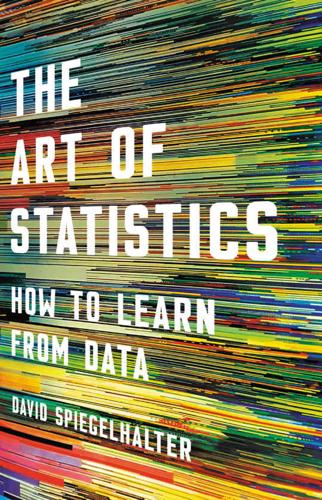
The Art of Statistics: How to Learn From Data
by
David Spiegelhalter
Published 2 Sep 2019
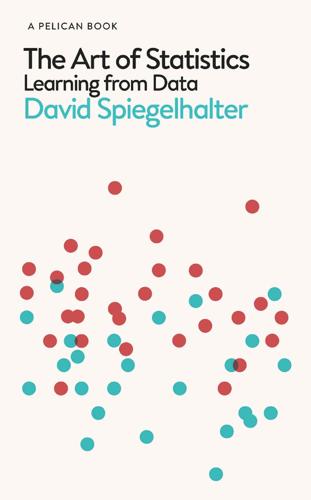
The Art of Statistics: Learning From Data
by
David Spiegelhalter
Published 14 Oct 2019

Machine, Platform, Crowd: Harnessing Our Digital Future
by
Andrew McAfee
and
Erik Brynjolfsson
Published 26 Jun 2017

Twitter and Tear Gas: The Power and Fragility of Networked Protest
by
Zeynep Tufekci
Published 14 May 2017
It can result in more polarization and at the same time deepen the filter bubble.44 The bias toward “Like” on Facebook promotes the echo-chamber effect, making it more likely that one sees posts one already agrees with. Of course, this builds upon the pre-existing human tendency to gravitate toward topics and positions one already agrees with—confirmation bias—which is well demonstrated in social science research. Facebook’s own studies show that the algorithm contributes to this bias by making the feed somewhat more tilted toward one’s existing views, reinforcing the echo chamber.45 Another type of bias is “comment” bias, which can promote visibility for the occasional quarrels that have garnered many comments. But how widespread are these problems, and what are their effects?

The Creativity Code: How AI Is Learning to Write, Paint and Think
by
Marcus Du Sautoy
Published 7 Mar 2019
This bias in the data has led to a whole host of algorithms that are making unacceptable decisions: voice recognition software trained on male voices that doesn’t recognise women’s voices; image recognition software that classifies black people as gorillas; passport photo booths that tell Asians their photos are unacceptable because they have their eyes closed. In Silicon Valley, four out of five people hired in the tech industry are white males. This has led Buolamwini to set up the Algorithmic Justice League to fight bias in the data that algorithms are learning on. The legal system is also facing challenges as people are being rejected for mortgages, jobs or state benefits because of an algorithm. These people justifiably want to know why they have been turned down. But given that these algorithms are creating decision trees based on their interaction with data that is hard to unravel, justifying these decisions is not easy.

We Are Data: Algorithms and the Making of Our Digital Selves
by
John Cheney-Lippold
Published 1 May 2017

Autonomous Driving: How the Driverless Revolution Will Change the World
by
Andreas Herrmann
,
Walter Brenner
and
Rupert Stadler
Published 25 Mar 2018

The Future of the Internet: And How to Stop It
by
Jonathan Zittrain
Published 27 May 2009

Algorithms to Live By: The Computer Science of Human Decisions
by
Brian Christian
and
Tom Griffiths
Published 4 Apr 2016
In almost every domain we’ve considered, we have seen how the more real-world factors we include—whether it’s having incomplete information when interviewing job applicants, dealing with a changing world when trying to resolve the explore/exploit dilemma, or having certain tasks depend on others when we’re trying to get things done—the more likely we are to end up in a situation where finding the perfect solution takes unreasonably long. And indeed, people are almost always confronting what computer science regards as the hard cases. Up against such hard cases, effective algorithms make assumptions, show a bias toward simpler solutions, trade off the costs of error against the costs of delay, and take chances. These aren’t the concessions we make when we can’t be rational. They’re what being rational means. Notes Please note that some of the links referenced are no longer working.

Empire of AI: Dreams and Nightmares in Sam Altman's OpenAI
by
Karen Hao
Published 19 May 2025
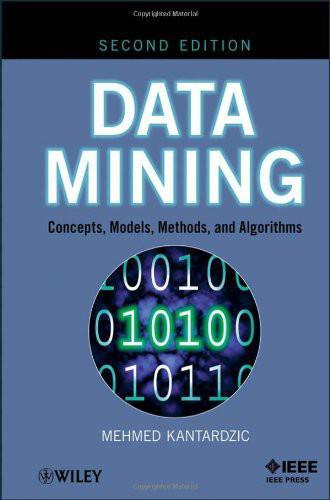
Data Mining: Concepts, Models, Methods, and Algorithms
by
Mehmed Kantardzić
Published 2 Jan 2003
The method has two variants: random sampling without replacement and random sampling with replacement. Random sampling without replacement is a popular technique in which n distinct samples are selected from N initial samples in the data set without repetition (a sample may not occur twice). The advantages of the approach are simplicity of the algorithm and nonexistence of any bias in a selection. In random sampling with replacement, the samples are selected from a data set such that all samples are given an equal chance of being selected, no matter how often they already have been drawn, that is, any of the samples may be selected more than once. Random sampling is not a one-time activity in a data-mining process.

The Elements of Statistical Learning (Springer Series in Statistics)
by
Trevor Hastie
,
Robert Tibshirani
and
Jerome Friedman
Published 25 Aug 2009
A. 510 Wong, W. 292 Wright, G. 664, 674, 693 Wright, M. 96, 421 Wu, T. 92, 294, 583 Wyner, A. 384, 603 Yang, N. 3, 49 Yang, Y. 686, 693 Yasui, Y. 664 Yeang, C. 654, 658 Yee, T. 300 Yekutieli, Y. 693 Yu, B. 90, 91, 384 Yuan, M. 90 Zhang, H. 90, 304, 428, 455 Zhang, J. 409–412, 605 Zhang, P. 257 Zhang, T. 384 Zhao, P. 90, 91 Zhao, Y. 693 Zhu, J. 89, 98, 174, 348, 349, 385, 426, 428, 434, 610, 611, 615, 657, 661, 664, 666, 693 Zidek, J. 84 Zou, H. 72, 78, 92, 349, 385, 550, 662, 693 This is page 737 Printer: Opaque this Index L1 regularization, see Lasso Activation function, 392–395 AdaBoost, 337–346 Adaptive lasso, 92 Adaptive methods, 429 Adaptive nearest neighbor methods, 475–478 Adaptive wavelet filtering, 181 Additive model, 295–304 Adjusted response, 297 Affine set, 130 Affine-invariant average, 482, 540 AIC, see Akaike information criterion Akaike information criterion (AIC), 230 Analysis of deviance, 124 Applications abstracts, 672 aorta, 204 bone, 152 California housing, 371–372, 591 countries, 517 demographics, 379–380 document, 532 flow cytometry, 637 galaxy, 201 heart attack, 122, 146, 207 lymphoma, 674 marketing, 488 microarray, 5, 505, 532 nested spheres, 590 New Zealand fish, 375–379 nuclear magnetic resonance, 176 ozone, 201 prostate cancer, 3, 49, 61, 608 protein mass spectrometry, 664 satellite image, 470 skin of the orange, 429–432 spam, 2, 300–304, 313, 320, 328, 352, 593 vowel, 440, 464 waveform, 451 ZIP code, 4, 404, 536–539 Archetypal analysis, 554–557 Association rules, 492–495, 499– 501 738 Index Automatic relevance determination, 411 Automatic selection of smoothing parameters , 156 B-Spline, 186 Back-propagation, 392–397, 408– 409 Backfitting, 297, 391 Backward selection, 58 stepwise selection, 59 Backward pass, 396 Bagging, 282–288, 409, 587 Basis expansions and regularization, 139–189 Basis functions, 141, 186, 189, 321, 328 Batch learning, 397 Baum–Welch algorithm, 272 Bayes classifier, 21 factor, 234 methods, 233–235, 267–272 rate, 21 Bayesian, 409 Bayesian information criterion (BIC), 233 Benjamini–Hochberg method, 688 Best-subset selection, 57, 610 Between class covariance matrix, 114 Bias, 16, 24, 37, 160, 219 Bias-variance decomposition, 24, 37, 219 Bias-variance tradeoff, 37, 219 BIC, see Bayesian Information Criterion Boltzmann machines, 638–648 Bonferroni method, 686 Boosting, 337–386, 409 as lasso regression, 607–609 exponential loss and AdaBoost, 343 gradient boosting, 358 implementations, 360 margin maximization, 613 numerical optimization, 358 partial-dependence plots, 369 regularization path, 607 shrinkage, 364 stochastic gradient boosting, 365 tree size, 361 variable importance, 367 Bootstrap, 249, 261–264, 267, 271– 282, 587 relationship to Bayesian method, 271 relationship to maximum likelihood method, 267 Bottom-up clustering, 520–528 Bump hunting, see Patient rule induction method Bumping, 290–292 C5.0, 624 Canonical variates, 441 CART, see Classification and regression trees Categorical predictors, 10, 310 Censored data, 674 Classical multidimensional scaling, 570 Classification, 22, 101–137, 305– 317, 417–429 Classification and regression trees (CART), 305–317 Clique, 628 Clustering, 501–528 k-means, 509–510 agglomerative, 523–528 hierarchical, 520–528 Codebook, 515 Combinatorial algorithms, 507 Combining models, 288–290 Committee, 289, 587, 605 Comparison of learning methods, 350–352 Complete data, 276 Index Complexity parameter, 37 Computational shortcuts quadratic penalty, 659 Condensing procedure, 480 Conditional likelihood, 31 Confusion matrix, 301 Conjugate gradients, 396 Consensus, 285–286 Convolutional networks, 407 Coordinate descent, 92, 636, 668 COSSO, 304 Cost complexity pruning, 308 Covariance graph, 631 Cp statistic, 230 Cross-entropy, 308–310 Cross-validation, 241–245 Cubic smoothing spline, 151–153 Cubic spline, 151–153 Curse of dimensionality, 22–26 Dantzig selector, 89 Data augmentation, 276 Daubechies symmlet-8 wavelets, 176 De-correlation, 597 Decision boundary, 13–15, 21 Decision trees, 305–317 Decoder, 515, see encoder Decomposable models, 641 Degrees of freedom in an additive model, 302 in ridge regression, 68 of a tree, 336 of smoother matrices, 153–154, 158 Delta rule, 397 Demmler-Reinsch basis for splines, 156 Density estimation, 208–215 Deviance, 124, 309 Diagonal linear discriminant analysis, 651–654 Dimension reduction, 658 for nearest neighbors, 479 Discrete variables, 10, 310–311 739 Discriminant adaptive nearest neighbor classifier, 475–480 analysis, 106–119 coordinates, 108 functions, 109–110 Dissimilarity measure, 503–504 Dummy variables, 10 Early stopping, 398 Effective degrees of freedom, 17, 68, 153–154, 158, 232, 302, 336 Effective number of parameters, 15, 68, 153–154, 158, 232, 302, 336 Eigenvalues of a smoother matrix, 154 Elastic net, 662 EM algorithm, 272–279 as a maximization-maximization procedure, 277 for two component Gaussian mixture, 272 Encoder, 514–515 Ensemble, 616–623 Ensemble learning, 605–624 Entropy, 309 Equivalent kernel, 156 Error rate, 219–230 Error-correcting codes, 606 Estimates of in-sample prediction error, 230 Expectation-maximization algorithm, see EM algorithm Extra-sample error, 228 False discovery rate, 687–690, 692, 693 Feature, 1 extraction, 150 selection, 409, 658, 681–683 Feed-forward neural networks, 392– 408 740 Index Fisher’s linear discriminant, 106– 119, 438 Flexible discriminant analysis, 440– 445 Forward selection, 58 stagewise, 86, 608 stagewise additive modeling, 342 stepwise, 73 Forward pass algorithm, 395 Fourier transform, 168 Frequentist methods, 267 Function approximation, 28–36 Fused lasso, 666 Gap statistic, 519 Gating networks, 329 Gauss-Markov theorem, 51–52 Gauss-Newton method, 391 Gaussian (normal) distribution, 16 Gaussian graphical model, 630 Gaussian mixtures, 273, 463, 492, 509 Gaussian radial basis functions, 212 GBM, see Gradient boosting GBM package, see Gradient boosting GCV, see Generalized cross-validation GEM (generalized EM), 277 Generalization error, 220 performance, 220 Generalized additive model, 295– 304 Generalized association rules, 497– 499 Generalized cross-validation, 244 Generalized linear discriminant analysis, 438 Generalized linear models, 125 Gibbs sampler, 279–280, 641 for mixtures, 280 Gini index, 309 Global Markov property, 628 Gradient Boosting, 359–361 Gradient descent, 358, 395–397 Graph Laplacian, 545 Graphical lasso, 636 Grouped lasso, 90 Haar basis function, 176 Hammersley-Clifford theorem, 629 Hard-thresholding, 653 Hat matrix, 46 Helix, 582 Hessian matrix, 121 Hidden nodes, 641–642 Hidden units, 393–394 Hierarchical clustering, 520–528 Hierarchical mixtures of experts, 329–332 High-dimensional problems, 649 Hints, 96 Hyperplane, see Separating Hyperplane ICA, see Independent components analysis Importance sampling, 617 In-sample prediction error, 230 Incomplete data, 332 Independent components analysis, 557–570 Independent variables, 9 Indicator response matrix, 103 Inference, 261–294 Information Fisher, 266 observed, 274 Information theory, 236, 561 Inner product, 53, 668, 670 Inputs, 10 Instability of trees, 312 Intercept, 11 Invariance manifold, 471 Invariant metric, 471 Inverse wavelet transform, 179 Index IRLS, see Iteratively reweighted least squares Irreducible error, 224 Ising model, 638 ISOMAP, 572 Isometric feature mapping, 572 Iterative proportional scaling, 585 Iteratively reweighted least squares (IRLS), 121 Jensen’s inequality, 293 Join tree, 629 Junction tree, 629 K-means clustering, 460, 509–514 K-medoid clustering, 515–520 K-nearest neighbor classifiers, 463 Karhunen-Loeve transformation (principal components), 66– 67, 79, 534–539 Karush-Kuhn-Tucker conditions, 133, 420 Kernel classification, 670 density classification, 210 density estimation, 208–215 function, 209 logistic regression, 654 principal component, 547–550 string, 668–669 trick, 660 Kernel methods, 167–176, 208–215, 423–438, 659 Knot, 141, 322 Kriging, 171 Kruskal-Shephard scaling, 570 Kullback-Leibler distance, 561 Lagrange multipliers, 293 Landmark, 539 Laplacian, 545 Laplacian distribution, 72 LAR, see Least angle regression Lasso, 68–69, 86–90, 609, 635, 636, 661 741 fused, 666 Latent factor, 674 variable, 678 Learning, 1 Learning rate, 396 Learning vector quantization, 462 Least angle regression, 73–79, 86, 610 Least squares, 11, 32 Leave-one-out cross-validation, 243 LeNet, 406 Likelihood function, 265, 273 Linear basis expansion, 139–148 Linear combination splits, 312 Linear discriminant function, 106– 119 Linear methods for classification, 101–137 for regression, 43–99 Linear models and least squares, 11 Linear regression of an indicator matrix, 103 Linear separability, 129 Linear smoother, 153 Link function, 296 LLE, see Local linear embedding Local false discovery rate, 693 Local likelihood, 205 Local linear embedding, 572 Local methods in high dimensions, 22–27 Local minima, 400 Local polynomial regression, 197 Local regression, 194, 200 Localization in time/frequency, 175 Loess (local regression), 194, 200 Log-linear model, 639 Log-odds ratio (logit), 119 Logistic (sigmoid) function, 393 Logistic regression, 119–128, 299 Logit (log-odds ratio), 119 Loss function, 18, 21, 219–223, 346 Loss matrix, 310 742 Index Lossless compression, 515 Lossy compression, 515 LVQ, see Learning Vector Quantization Mahalanobis distance, 441 Majority vote, 337 Majorization, 294, 553 Majorize-Minimize algorithm, 294, 584 MAP (maximum aposteriori) estimate, 270 Margin, 134, 418 Market basket analysis, 488, 499 Markov chain Monte Carlo (MCMC) methods, 279 Markov graph, 627 Markov networks, 638–648 MARS, see Multivariate adaptive regression splines MART, see Multiple additive regression trees Maximum likelihood estimation, 31, 261, 265 MCMC, see Markov Chain Monte Carlo Methods MDL, see Minimum description length Mean field approximation, 641 Mean squared error, 24, 285 Memory-based method, 463 Metropolis-Hastings algorithm, 282 Minimum description length (MDL), 235 Minorization, 294, 553 Minorize-Maximize algorithm, 294, 584 Misclassification error, 17, 309 Missing data, 276, 332–333 Missing predictor values, 332–333 Mixing proportions, 214 Mixture discriminant analysis, 449– 455 Mixture modeling, 214–215, 272– 275, 449–455, 692 Mixture of experts, 329–332 Mixtures and the EM algorithm, 272–275 MM algorithm, 294, 584 Mode seekers, 507 Model averaging and stacking, 288 Model combination, 289 Model complexity, 221–222 Model selection, 57, 222–223, 230– 231 Modified regression, 634 Monte Carlo method, 250, 495 Mother wavelet, 178 Multidimensional scaling, 570–572 Multidimensional splines, 162 Multiedit algorithm, 480 Multilayer perceptron, 400, 401 Multinomial distribution, 120 Multiple additive regression trees (MART), 361 Multiple hypothesis testing, 683– 693 Multiple minima, 291, 400 Multiple outcome shrinkage and selection, 84 Multiple outputs, 56, 84, 103–106 Multiple regression from simple univariate regression, 52 Multiresolution analysis, 178 Multivariate adaptive regression splines (MARS), 321–327 Multivariate nonparametric regression, 445 Nadaraya–Watson estimate, 193 Naive Bayes classifier, 108, 210– 211, 694 Natural cubic splines, 144–146 Nearest centroids, 670 Nearest neighbor methods, 463– 483 Nearest shrunken centroids, 651– 654, 694 Network diagram, 392 Neural networks, 389–416 Index Newton’s method (Newton-Raphson procedure), 120–122 Non-negative matrix factorization, 553–554 Nonparametric logistic regression, 299–304 Normal (Gaussian) distribution, 16, 31 Normal equations, 12 Numerical optimization, 395–396 Object dissimilarity, 505–507 Online algorithm, 397 Optimal scoring, 445, 450–451 Optimal separating hyperplane, 132– 135 Optimism of the training error rate, 228–230 Ordered categorical (ordinal) predictor, 10, 504 Ordered features, 666 Orthogonal predictors, 53 Overfitting, 220, 228–230, 364 PageRank, 576 Pairwise distance, 668 Pairwise Markov property, 628 Parametric bootstrap, 264 Partial dependence plots, 369–370 Partial least squares, 80–82, 680 Partition function, 638 Parzen window, 208 Pasting, 318 Path algorithm, 73–79, 86–89, 432 Patient rule induction method(PRIM), 317–321, 499–501 Peeling, 318 Penalization, 607, see regularization Penalized discriminant analysis, 446– 449 Penalized polynomial regression, 171 Penalized regression, 34, 61–69, 171 Penalty matrix, 152, 189 743 Perceptron, 392–416 Piecewise polynomials and splines, 36, 143 Posterior distribution, 268 probability, 233–235, 268 Power method, 577 Pre-conditioning, 681–683 Prediction accuracy, 329 Prediction error, 18 Predictive distribution, 268 PRIM, see Patient rule induction method Principal components, 66–67, 79– 80, 534–539, 547 regression, 79–80 sparse, 550 supervised, 674 Principal curves and surfaces, 541– 544 Principal points, 541 Prior distribution, 268–272 Procrustes average, 540 distance, 539 Projection pursuit, 389–392, 565 regression, 389–392 Prototype classifier, 459–463 Prototype methods, 459–463 Proximity matrices, 503 Pruning, 308 QR decomposition, 55 Quadratic approximations and inference, 124 Quadratic discriminant function, 108, 110 Radial basis function (RBF) network, 392 Radial basis functions, 212–214, 275, 393 Radial kernel, 548 Random forest, 409, 587–604 algorithm, 588 744 Index bias, 596–601 comparison to boosting, 589 example, 589 out-of-bag (oob), 592 overfit, 596 proximity plot, 595 variable importance, 593 variance, 597–601 Rao score test, 125 Rayleigh quotient, 116 Receiver operating characteristic (ROC) curve, 317 Reduced-rank linear discriminant analysis, 113 Regression, 11–14, 43–99, 200–204 Regression spline, 144 Regularization, 34, 167–176 Regularized discriminant analysis, 112–113, 654 Relevance network, 631 Representer of evaluation, 169 Reproducing kernel Hilbert space, 167–176, 428–429 Reproducing property, 169 Responsibilities, 274–275 Ridge regression, 61–68, 650, 659 Risk factor, 122 Robust fitting, 346–350 Rosenblatt’s perceptron learning algorithm, 130 Rug plot, 303 Rulefit, 623 SAM, 690–693, see Significance Analysis of Microarrays Sammon mapping, 571 SCAD, 92 Scaling of the inputs, 398 Schwarz’s criterion, 230–235 Score equations, 120, 265 Self-consistency property, 541–543 Self-organizing map (SOM), 528– 534 Sensitivity of a test, 314–317 Separating hyperplane, 132–135 Separating hyperplanes, 136, 417– 419 Separator, 628 Shape average, 482, 540 Shrinkage methods, 61–69, 652 Sigmoid, 393 Significance Analysis of Microarrays, 690–693 Similarity measure, see Dissimilarity measure Single index model, 390 Singular value decomposition, 64, 535–536, 659 singular values, 535 singular vectors, 535 Sliced inverse regression, 480 Smoother, 139–156, 192–199 matrix, 153 Smoothing parameter, 37, 156–161, 198–199 Smoothing spline, 151–156 Soft clustering, 512 Soft-thresholding, 653 Softmax function, 393 SOM, see Self-organizing map Sparse, 175, 304, 610–613, 636 additive model, 91 graph, 625, 635 Specificity of a test, 314–317 Spectral clustering, 544–547 Spline, 186 additive, 297–299 cubic, 151–153 cubic smoothing, 151–153 interaction, 428 regression, 144 smoothing, 151–156 thin plate, 165 Squared error loss, 18, 24, 37, 219 SRM, see Structural risk minimization Stacking (stacked generalization), 290 Starting values, 397 Statistical decision theory, 18–22 Index Statistical model, 28–29 Steepest descent, 358, 395–397 Stepwise selection, 60 Stochastic approximation, 397 Stochastic search (bumping), 290– 292 Stress function, 570–572 Structural risk minimization (SRM), 239–241 Subset selection, 57–60 Supervised learning, 2 Supervised principal components, 674–681 Support vector classifier, 417–421, 654 multiclass, 657 Support vector machine, 423–437 SURE shrinkage method, 179 Survival analysis, 674 Survival curve, 674 SVD, see Singular value decomposition Symmlet basis, 176 Tangent distance, 471–475 Tanh activation function, 424 Target variables, 10 Tensor product basis, 162 Test error, 220–223 Test set, 220 Thin plate spline, 165 Thinning strategy, 189 Trace of a matrix, 153 Training epoch, 397 Training error, 220–223 Training set, 219–223 Tree for regression, 307–308 Tree-based methods, 305–317 Trees for classification, 308–310 Trellis display, 202 745 Undirected graph, 625–648 Universal approximator, 390 Unsupervised learning, 2, 485–585 Unsupervised learning as supervised learning, 495–497 Validation set, 222 Vapnik-Chervonenkis (VC) dimension, 237–239 Variable importance plot, 594 Variable types and terminology, 9 Variance, 16, 25, 37, 158–161, 219 between, 114 within, 114, 446 Variance reduction, 588 Varying coefficient models, 203– 204 VC dimension, see Vapnik–Chervonenkis dimension Vector quantization, 514–515 Voronoi regions, 510 Wald test, 125 Wavelet basis functions, 176–179 smoothing, 174 transform, 176–179 Weak learner, 383, 605 Weakest link pruning, 308 Webpages, 576 Website for book, 8 Weight decay, 398 Weight elimination, 398 Weights in a neural network, 395 Within class covariance matrix, 114, 446

The Age of Surveillance Capitalism
by
Shoshana Zuboff
Published 15 Jan 2019